

Unleashed Delmarva Complimentary VOL. 6 ISSUE 3 - FALL 2019 “Tilly” Dementia & How to Live With An Affected Pet Pet Liability Insurance Review & Updates on Canine Pain Meds Just an Impulse

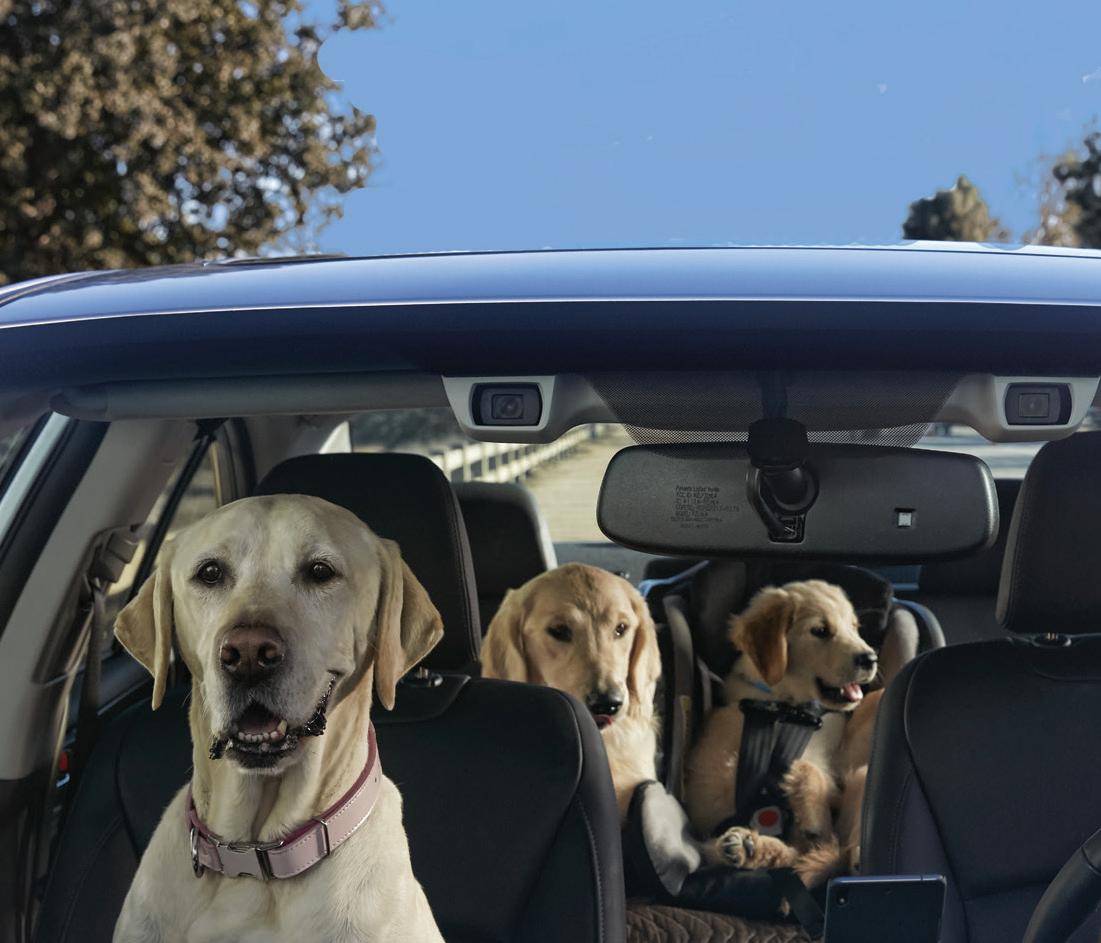












3 Delmarva Unleashed Fall 2019 Don’t Sit. Don’t Stay. Never roll over. Dog tested. Dog approved. Rt. 13 & Winner Blvd., Delmar, MD 410-896-3800 • GatewaySubaru.com CONVENIENT TO MARYLAND AND DELAWARE SHORES - JUST OFF RT 13 FULL LINE OF SUBARU MODELS


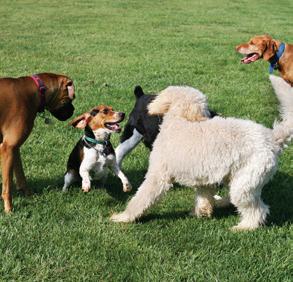






4 Delmarva Unleashed Fall 2019 8 Bark of the Town 12 Dementia & How to Live With An Affected Pet 16 Pet Liability Insurance 18 Authentically Canine 22 Just an Impulse 26 Embarking on New Adventures 30 Nine Human Food You Should Be Feeding Your Dog 34 Review & Updates on Canine Pain Meds 40 Your Smart Pup 44 How Much CBD Oil Do I Use? Publisher Sandy Phillips Associate Publisher Farin Phillips Edited by Nelson Griffin Contributing Writers Amanda Abresch, B.S., ABCDT, APDT, CPDT-KA George DeGeyter Polly Elliott Didi Cordero-Figeroa John Maniatty, V.M.D. Linda Riggins Tracy Rosensteel T. Verdent Bridget Webber Susie Yakowicz Office (410)726-7334 Delmarva Unleashed Vol. 6 Issue 3 Fall 2019 contents Delmarva Unleashed is published four times a year; Spring, Summer, Fall, and Holiday/Winter. It is circulated throughout Maryland’s Lower Shore, Mid Shore and onto Virginia’s Eastern Shore. The magazine can also be found throughout Delaware and is published by Grand Living Magazine, LLC. “Delmarva Unleashed” is protected under trademark registration. No portion of this publication, in whole or part, may be reproduced without written permission from the publisher. Copyright 2019©, Grand Living Magazine, LLC. All rights reserved. Content in Delmarva Unleashed is intended to provide information only and is in no way meant to treat or diagnose. Always consult with a specialty professional to address your own personal needs. The company makes every effort to ensure that all information presented is correct, however, we do not make any representations or warranties as to the accuracy of the information, and reliance on information provided, is solely at your own risk. Pooch Palooza and FastFetch Cup are trademarks owned by Grand Living Magazine, LLC.
46 Bone Appetite 48 Canine Travel 51 Doggie Socials
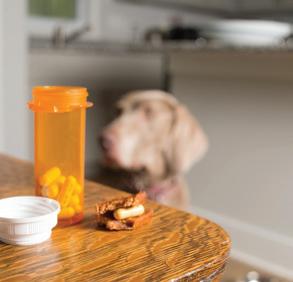



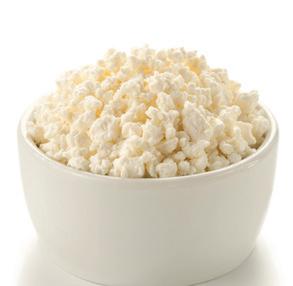

52 To the Rescue 54 Canine Perspective
On the Cover: “Tilly” proudly owned by Peggy Brennan of Princess Anne, MD. Photographed during the Delmarva Unleashed Annual Calendar Shoot 2018. Image by Next Wave Studios.
Submissions: Please email all editorial material to creative@grandlivingmag. com. We welcome previously unpublished articles and high resolution color images in jpg format. We cannot guarantee that either will be printed or returned. All articles are subject to editing and fact check. We reserve the right to publish all letters received. You may also mail submissions to Grand Living Magazine, 12610 Murray Rd, Whaleyville, MD 21872.
Unleashed Fall 2019 5
Delmarva

The Games of the 6th Pooch Palooza April 25th & 26th, 2020 Frontier Town Western Theme Park West Ocean City, MD Follow Delmarva Unleashed On Facebook For Details!
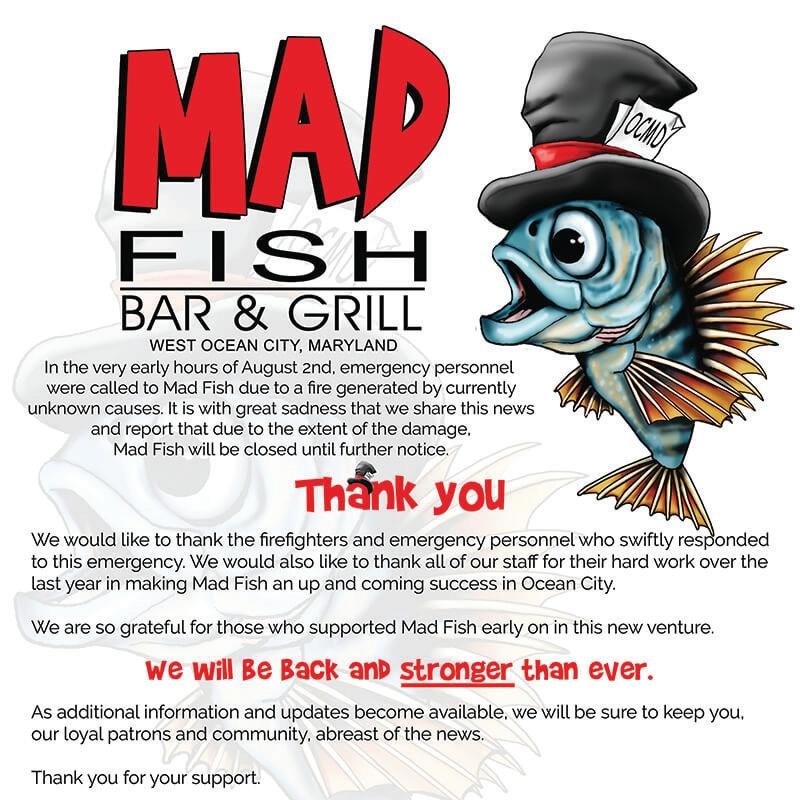
Bark of the Town








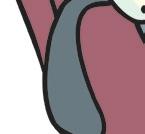


DNREC’s tick monitoring program confirms finding Asian longhorned tick for the first time in Delaware in northern New Castle County






The Asian longhorned tick has been found for the first time in Delaware, DNREC’s new tick surveillance program within the Division of Fish & Wildlife’s Mosquito Control Section announced today. This tick is a known or suspected vector of various pathogens or diseases affecting humans, wildlife, and livestock in other parts of the world, particularly in its native eastern Asia. In the United States, only two instances of Asian longhorned ticks attached to humans have been confirmed, and there have been no reported instances of disease transmission to humans or animals.
Asian longhorned ticks during tick sampling initiated this spring by DNREC’s statewide tick program, a total of five Asian longhorned tick nymphs – immature ticks – were found in late June in northern New Castle County. Dr. Lauren Maestas, the state’s tick biologist, visually identified the ticks, and his finding was confirmed through genetic analysis by the Center for Vector Biology at Rutgers University in New Jersey.
With the Asian longhorned tick confirmation, Delaware now has seven tick species of human or domestic animal health concern, with five species of primary focus: black-legged or deer ticks, lone star ticks, American dog ticks, Gulf Coast ticks, and now the Asian longhorned tick (also known as the cattle tick or bush tick). Delaware’s finding brings the total number of states with recognized Asian longhorned tick populations to 12.
The Asian longhorned tick was first observed and identified in North America on sheep in New Jersey in 2017, although the Northeast Regional Center for Excellence in Vector-Borne Diseases at Cornell University subsequently determined that the species has been present in the US since 2010. The range of this invasive tick species has spread quickly, and now includes neighboring Pennsylvania and Maryland as well as New Jersey.

8 Delmarva Unleashed Fall 2019
The Asian longhorned tick expanded beyond its native China, Korea, and Japan to New Zealand and Australia, before arriving in the United States through a variety of possible routes. This tick is native to regions with a climate similar to the northeastern United States, allowing it to survive and overwinter here.
DNREC’s tick program advises taking simple steps to avoid the Asian longhorned tick, as well as other tick species, such as using insect repellent containing DEET, spraying clothing with permethrin, and wearing trousers tucked into your shoes along with long-sleeved clothing that covers extremities.
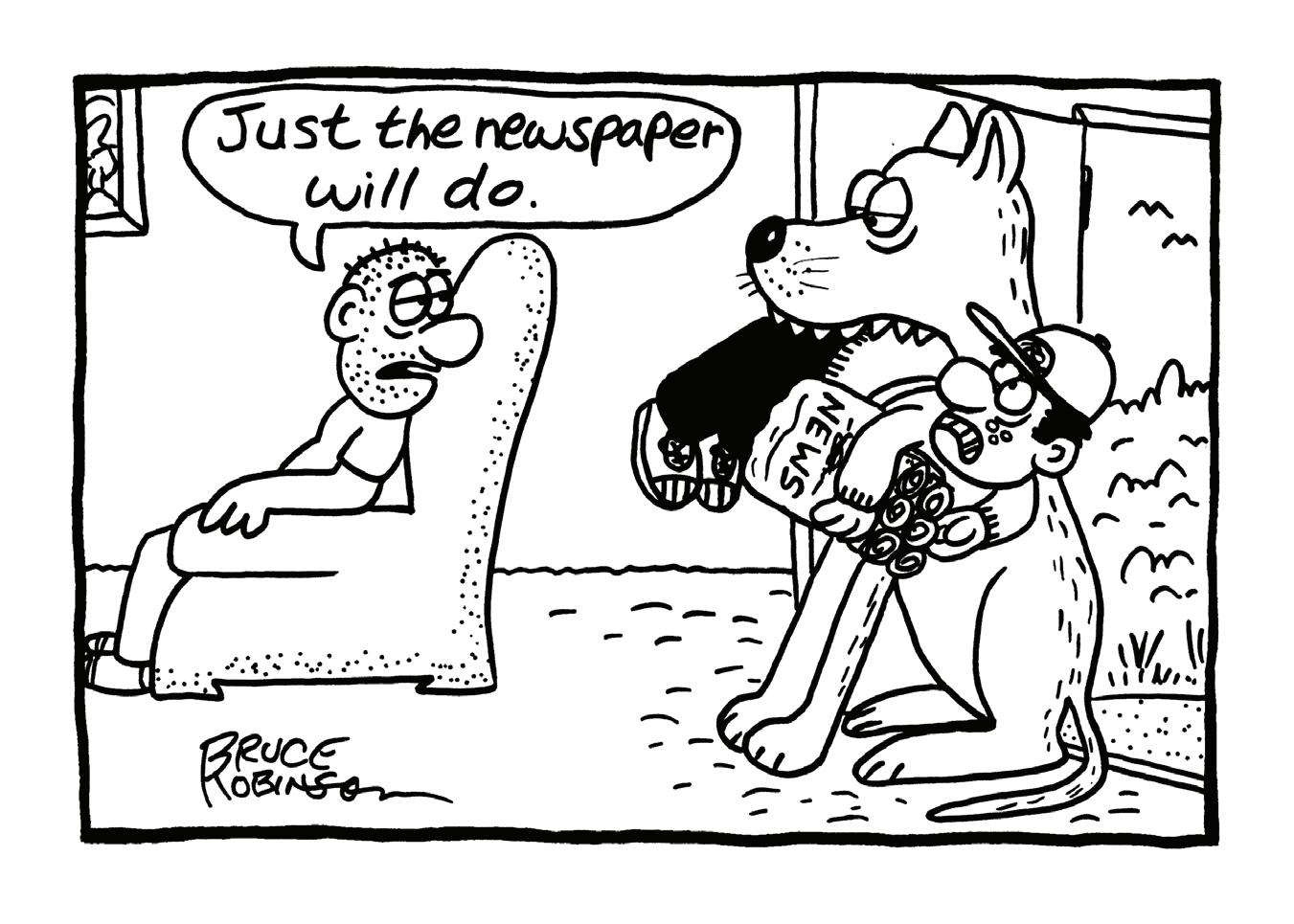
While there have been no reports of Asian longhorned tick-borne illness occurring in the United States, in other countries, bites from these ticks have made people seriously ill. According to Infectious Disease Epidemiologist Paula Eggers of the Delaware Division of Public Health, no disease-causing agents for people have been found to date in Asian longhorned ticks collected in the United States. Prevention is key to reducing tick-borne disease in humans. Checking your body for ticks daily, properly removing ticks, and showering soon after being outdoors all help to prevent tick attachment, and hence transfer of tickborne diseases. The Division of Public Health urges anyone who develops a fever, rash, or other symptoms following a tick bite to contact their health care provider.
With regard to its effects on domestic animals, the Asian longhorned tick is known to swarm livestock and horses in great numbers, leading to substantial loss of blood and, if the ticks are not removed, possible death of the animals, according to Deputy State Veterinarian Dr. Karen Lopez of the Delaware Department of Agriculture. Dr. Lopez added that no disease-causing agents for animals
Delmarva Unleashed Fall 2019 9
have been found to date in Asian longhorned ticks collected in the United States. Animal owners should consult their veterinarian about methods of tick prevention, and contact a veterinarian immediately if they notice signs of illness in their livestock, horses, or pets.
Asian longhorned ticks have been reported infesting wildlife, including mammals and birds. The impact of the Asian longhorned tick on wildlife health in the United States, and the role of wildlife in its spread, is currently unknown.
DNREC’s tick program notes the Asian longhorned tick’s three post-egg life stages (larva, nymph, adult) can be found on a range of small-to-large size mammal hosts. The species also is known to reproduce without a mate. Primary habitats for these ticks in the United States are meadows and grassy areas near forested locations. In other areas, the ticks have been found primarily outside the coastal plain, which could indicate that Delaware’s piedmont region located north of I-95 is at greatest risk for establishment of this species. However, the tick could spread into Delaware’s coastal plain south of I-95, though it has yet to be found there. Distribution of the Asian longhorned tick in Delaware may change and is subject to various factors, including host availability, environmental conditions, and movement by people, pets, wildlife, and livestock.
For more information contact the Division of Fish & Wildlife’s Mosquito Control Section tick program at 302739-9917. Tick-related human health or medical issues please contact the Delaware Division of Public Health at 888-295-5156.
Canine Emotions (current thinking)

According to current scientific research, adult canine intelligence and emotional development is comparable to that of a 2-3 year old; almost parallel.



Ponder this: if you have ever caught a dog doing something he is not suppose to and they hang their head, do we see shame or guilt? How about the dog that gets a new possession and struts around in front of it’s peers? Is that not pride?
The Canine Cognition Center at Yale University said in 2018, that the field of canine cognition is still very young and that man still has a great deal to learn from and about dogs.


Pet Oxygen Mask Fundraising
To date: funds generated at the annual Pooch Palooza Dog Festival and sales from the Delmarva Unleashed annual fundraising calendar have allowed us to place 21 Pet Oxygen Masks with area fire departments. Thank you to everyone that helped make these donations possible!
Affection/Love
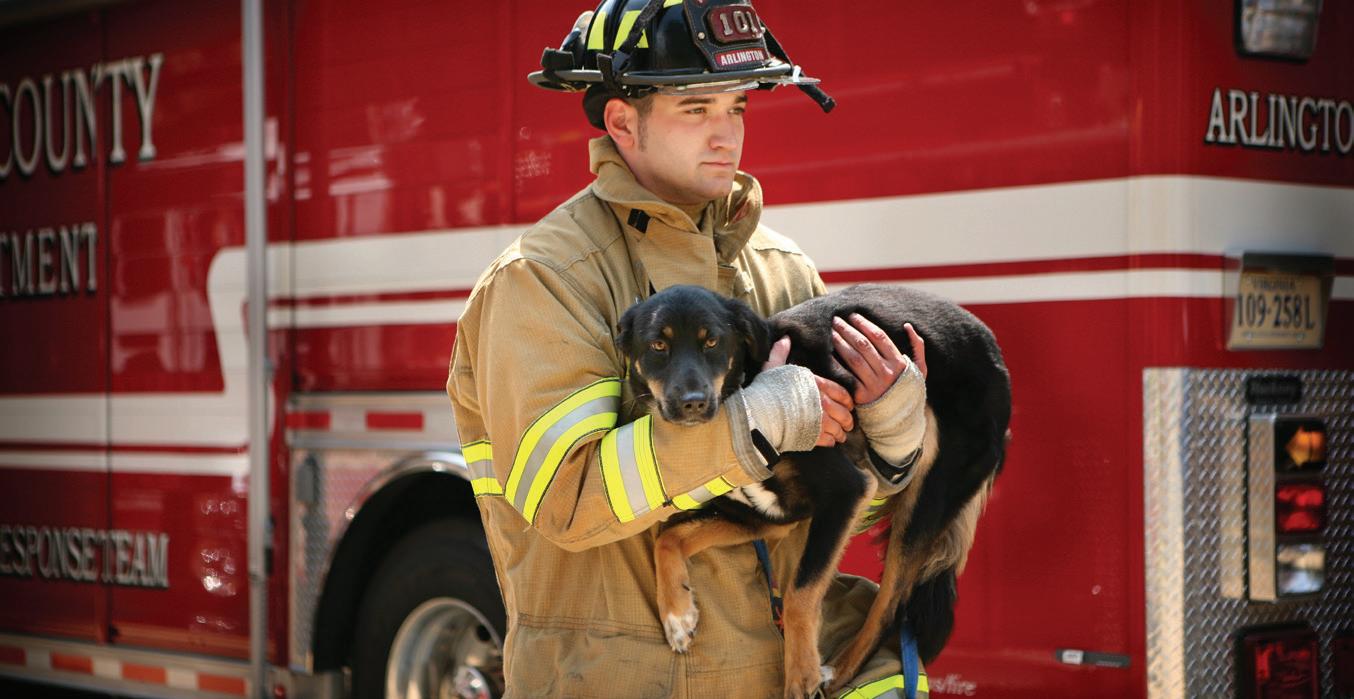
Suspicion & Shyness
Joy Anger
Fear
Disgust
Contentment
Distress
Excitement/ Arousal
Source: Psychology Today
Human age in years.
Birth 1 2 3 4 5
Contempt Guilt Pride Shame
Dementia Symptoms, Treatments and How to Live With Your Affected Pet




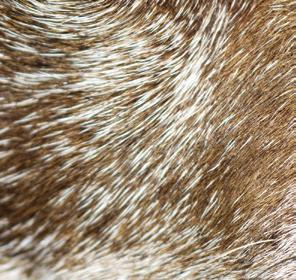
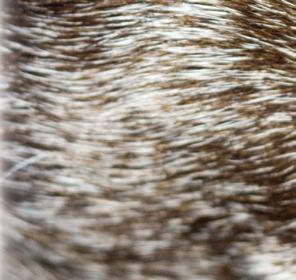

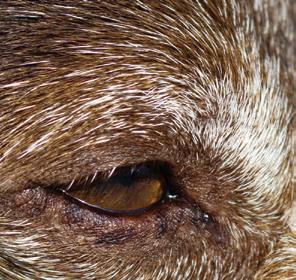

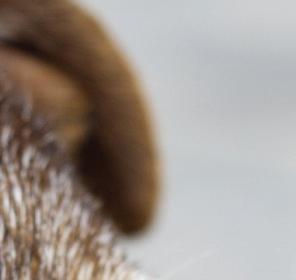
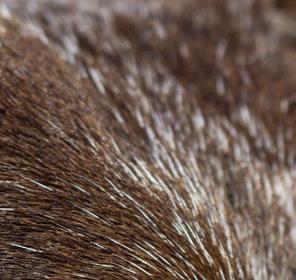
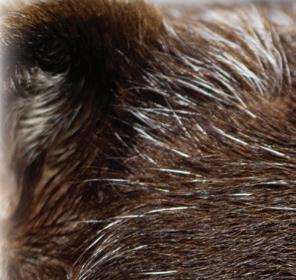 by Linda Riggins
by Linda Riggins
JJust as humans can develop dementia, our dogs can develop Canine Cognitive Dysfunction (CCD). Estimates are that between 14 and 60 % of dogs that are over 8 years of age have some degree of canine cognitive dysfunction. Your dog might have this disease if it exhibits one or more of the following behaviors:




• Soils the house
• Stands in corners

• Gets "trapped" under or behind furniture
• Seems confused at times
• Is anxious or unresponsive around people it's familiar with
• Paces or is awake at night while its new bedtime becomes daytime

• Barks or howls at night
• Shows little interest in eating or in the activities it previously enjoyed
Other symptoms of cognitive dysfunction include falling off things, difficulty climbing stairs, trouble getting into bed and standing at the hinge side of doors waiting to get out. Some dogs with dementia are more aggressive around other animals, show little interest in them, or are afraid of them. Another characteristic in some dogs is that they are more likely to snap at or bite humans.


12 Delmarva Unleashed Fall 2019
Does Your Dog Really Have Dementia?
Just because your dog shows, one or more of these symptoms doesn't mean that it has dementia. Only an evaluation by your veterinarian can determine that, but once you notice changes in the way your dog acts, begin writing them down so you'll have specifics to talk about with your vet.
Your dog's doctor will want to rule out medical problems as the cause of these behaviors. A bladder problem, for example, could be the reason your pet is having accidents or pacing.
Drug Treatments
If your vet confirms CCD, there are many treatments the two of you can discuss. Prescribed meds could help with either anxiety or sleep disorders. Other drugs might improve brain function. A few manufacturers of dog food sell products available through a prescription that could promote brain health too.
Natural Supplements as Treatments
If you're an owner who wants to skip anything that requires a prescription, you might want to try natural supplements, maybe CBD. Your vet can help you with this decision. If your vet shuts you down immediately, perhaps it's time to find a more progressive vet. They should at the least be open to discussion and who knows, maybe a combination of both herbals and pharmaceuticals is the best solution for your particular dog. Possible supplement options in addition to CBD may include coconut oil, which might
improve cognitive function, and melatonin, which might help with sleepless nights.
CBD for Dogs
CBD (cannabidiol) is an herb that's often given to dogs in oil form. It's a possible solution for lowering anxiety or improving appetite. It can be hempbased or cannabis-based. Most veterinarians say pet owners should choose the former type of the product because the cannabis-based option poses possible dangers (THC) if it is in a potent form, and with the industry being young and relatively unregulated be sure to do your homework thoroughly before beginning any brand of CBD.
CBD oil and other CBD supplements are not regulated by the FDA, nor has a scientific study about their effectiveness in treating dog ailments been completed. However, anecdotal reports from some pet owners indicate that using it can improve functioning in a dog with dementia.
More Treatments for Dogs With Dementia
Other ways of addressing Canine Cognitive Dysfunction include calming music (classical) and acupuncture. Synthetic pheromones (think of it as aromatherapy for dogs) can be useful too.
Low-level exercise and play can help, too. Walking can reduce anxiety. Non-strenuous play with toys is an activity that can also keep your dog engaged. Don't forget to try food-finding games or puzzles to stimulate your dog's brain.
Delmarva Unleashed Fall 2019 13
How To Improve a Dog's Appetite
Simple ways to help your dog to eat more include:

• Canned dog food
• Chicken bone broth - No garlic or onion
• Greek yogurt (plain)



































• A balanced raw diet - Honest Kitchen, Sojo's, Grandma Lucy's are all excellent places to start here.
• Brisk walking before eating




Safe Surroundings for a Dog With CCD


For your dog's safety, make modifications to its environment. Unless your floors are carpeted, use non-slip mats. Make sure there are no small spaces where your dog's head can get stuck. Dogs with dementia sometimes don't realize that all they need to do to get out of a tight space is to back out.
To avoid stumbles and falls, it's best for your pet to be on one level. If your dog is sleeping with you on the second level of your home, invest in a quality baby gate to avoid falls during the night or anytime really. Keep the areas your dog inhabits clear and organized. Put food and water bowls in a corner so your dog can't knock them over. Since your dog might have trouble determining the water level, you may have to elevate its bowl. If your dog is incontinent, consider pee pads or furniture covers, maybe even a toddler waterproof pad to cover a larger area might be necessary.
Avoid leaving your dog in a room where the door opens inward because it might be standing there when someone opens it. If your pet must be

in this room, open the door slowly. You might have to pick up a small dog or handle a larger dog by its collar or harness more often. If the dog doesn't like this, train it to comply by using treats.
A fixed schedule helps in your dog's reorientation. Make feedings, wakeup time, and sleep time consistent. Be observant when your dog's around other dogs. It might be aggressive or passive around them, and it might be necessary for you to deny your dog interaction with other pets for everyone's safety.






Final Words






This diagnosis might seem overwhelming, but these suggestions should offer support. Choose the ones that apply to your situation. You know your dog's behaviors and environment better than anyone. Your input is necessary when you talk with your veterinarian as you try to help your faithful companion. They have given you so much, return the support during this chapter of their lives. They count on you.

14 Delmarva Unleashed Fall 2019

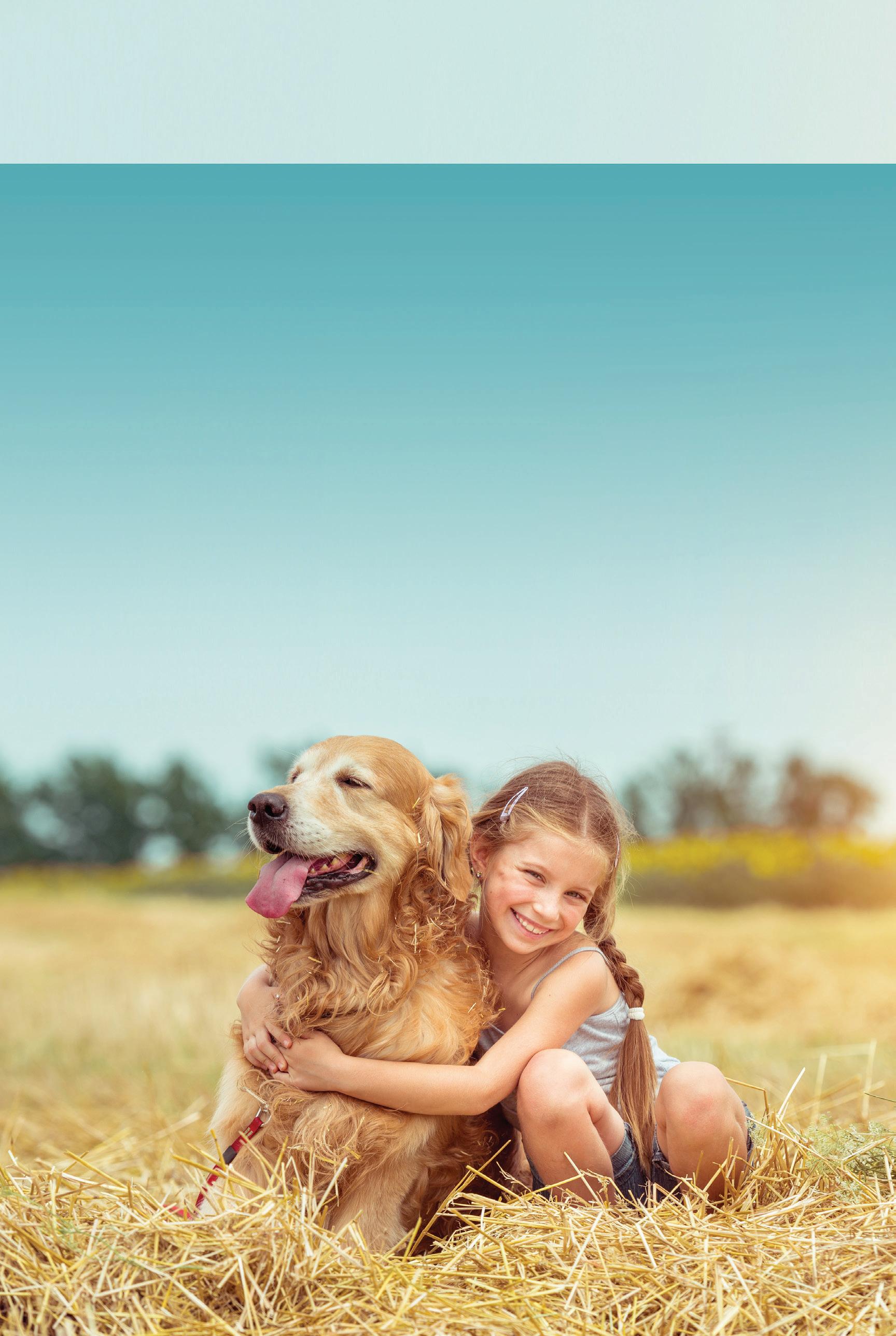


MI Nutrition, LLC rig Bi-State Blvd. - Delmar, DE Bryan & Brittingham, Inc. Your Full Service Feed & Hardware Store Mon. - Fri. 7:30 - 5:00 Sat. 7:30 - 3:00 THREE UNIQUE BRANDS FOUND ONLY AT YOUR PMI NUTRITION RETAILER Wholesome nutrition for all life stages Holistic pet food for immunity, vitality & longevity Premium formulas with no added corn, wheat or soy © 20 1 6 P MI Nutrition, LLC All rig h ts r ese r v e d Visit the pet food experts below to find out which PMI Nutrition® Pet Food is best for your animal. THREE UNIQUE BRANDS FOUND ONLY AT YOUR PMI NUTRITION RETAILER Wholesome nutrition for all life stages Holistic pet food for immunity, vitality & longevity Premium formulas with no added corn, wheat or soy Buy 8, Get 1 Free Buy 8, Get 1 Free Buy 10, Get 1 Free
5 Ways Dogs Teach Us to Be Authentic and Enjoy Life
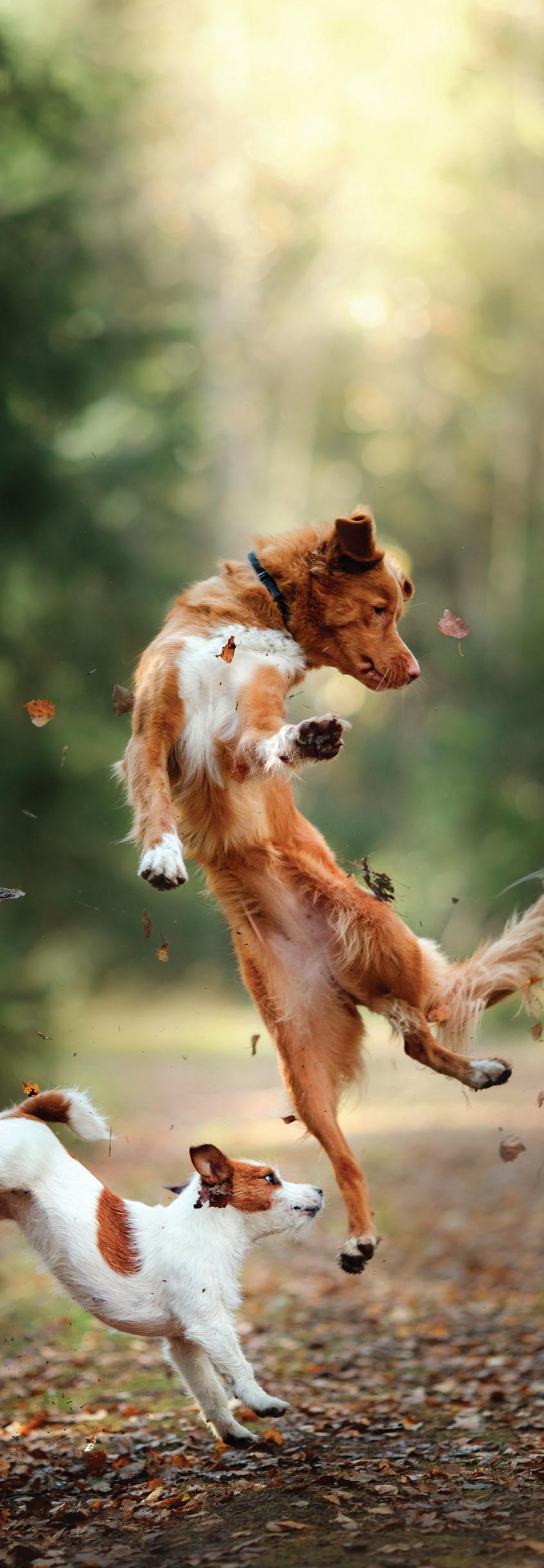
Authentically Canine
WWouldn't it be great to go with the flow and appreciate life just like dogs do? With their ability to find joy in the little things, our canine companions have the edge over anxiety-laden humans. They forgive and let go of stress rather than harbor a grudge, and every day is full of possibility. Here's how to meet life with the authenticity and zest of a well-balanced canine.
Live for the moment
Do you imagine your dog worries about whether his pals approve of him? It's doubtful he entertains the idea. Instead, he lives in the present. He's more interested in intriguing scents carried on the breeze than how to impress others.
The past is only useful as a teaching aid. Learn from difficulties, and you're less likely to make similar mistakes again. Dogs learn quickly to use rewarding behaviors rather than worry about mishaps. Likewise, the future is an imagined event, not reality. Dogs don't ponder what will happen tomorrow; they concentrate on now.
Focus on the present and stop going over the past or thinking about problems that probably won't occur. You'll face less stress than when you live in another time frame.
by Bridget Webber
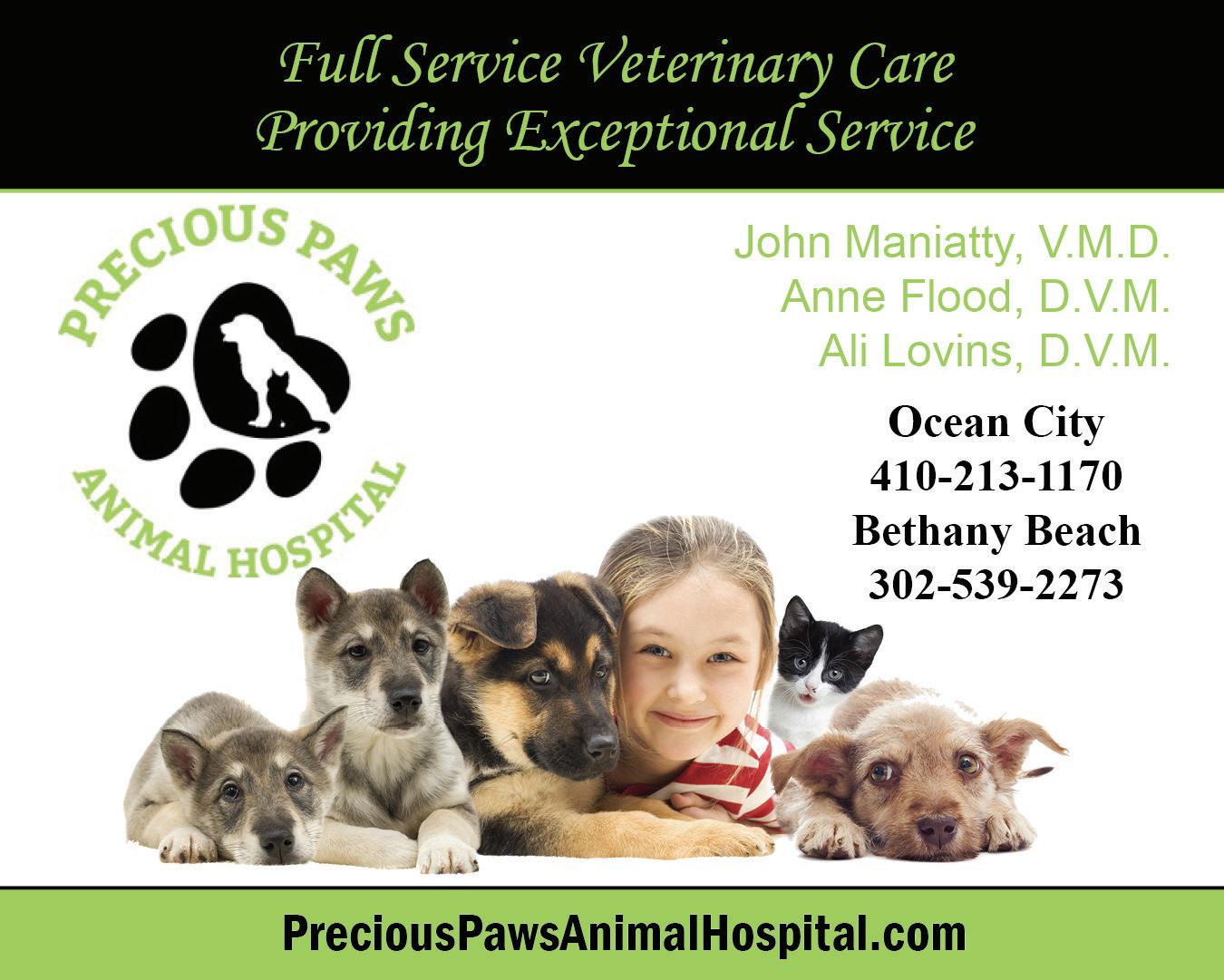
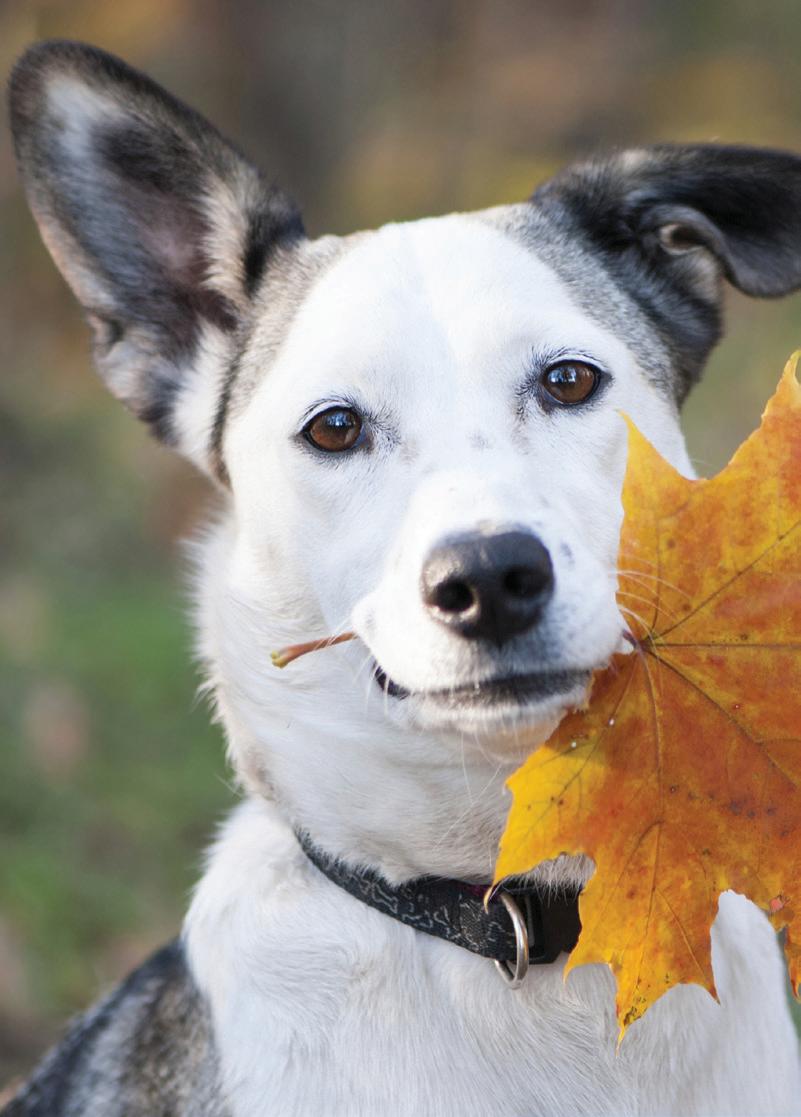






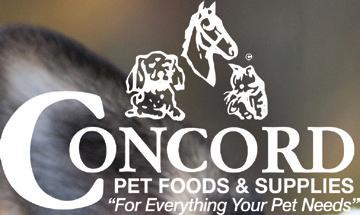
John Maniatty, VMD Fantasia Maniatty, DVM Anne Flood, DVM Ali Lovins, DVM Ocean City 410-213-1170 Bethany Beach 302-539-2273 concordpe�oods.com 10off Not to be combined with any other coupon, discount, or offer. Expires - 10/31/2019. Delmarva Unleashed $ Your Purchase of $60 or More! Catering to pets & their owners for over 38 years! Locally owned & operated Concord Pet Coupon Visit any of our 31 locations including: Dover - 302-672-9494 Elkton - 410-398-5554 Middletown - 302-376-1616 Milford - 302-424-8373 Rehoboth - 302-226-2300 Seaford - 302-628-1001 Smyrna - 302-653-1515 Fox Run Shopping Ctr. - 302-838-4300 Community Plaza - 302-324-0502 Long Neck - 302-945-2113 Salisbury - 443- 944-0223 Berlin - 443-513-3932
Have fun
Humans love fun, but their canine pals experience more of it than them. People entertain ideas about when the fun is fitting and when the moment should be somber. Even waiting for a bus or cleaning the house is tackled with a serious attitude.
Dogs don't see some occasions as appropriate for fun and others as requiring a specific mindset. You will enjoy everyday life more if you open your mind to possibilities and look for positive qualities.
Don't wait
When a dog has the urge to roll in the grass, chase a squirrel, or leap for joy, he does it straight away. He doesn't hang around for the weather to brighten up, or think of carrying out his aim after he's completed chores.
Do similarly; if you want to sing, paddle in the sea, or fly a kite, do it without delay. Get on your bike, wear your roller skates, or turn up the music; do whatever makes you feel good now.
Get over setbacks
Dogs let people know when they dislike an event but stop complaining when it's over. They don't hold grudges or sulk when problems get in their way; they move to the next moment and instantly forget about misgivings.
If you forget personal slights and difficulties, you'll have few worries. You won't complain or spend ages judging people who don't live up to your expectations. The faster you recover from setbacks, the better.
Don't disguise your emotions
Humans are complicated beings who hide their feelings. Dogs, on the other hand, show what they feel as soon as an emotion arises. If your dog is happy or sad, you understand what he's experiencing because he doesn't pretend otherwise.
If you want to be more easy-going, let your emotions out and experience them fully. Holding them at bay increases them because they bubble and brew inside of you. Allow them to run their course, and they will no longer burden you.
Dogs know how to live well. They don't muddy comprehension and pretend to be anything other than they are to impress. They grasp pleasure instead of waiting for it or attempting to force happiness to emerge. Take a canine approach to life, and the upshot will be more frolics and less stress.
Reference from pg. 38
(2) Johnson, Tony, DVM, DACVECC “Management of Acute Pain.” VIN, 65th Convention of the Canadian Veterinary Medical Association, 2013, July 2013, www.vin.com/members.cms. project /defaultadv1.aspx?id=5835550&pid=11381&
(3) Thompson, Dave. “Opioid Therapy.” VASG Opioid Analgesics, VSAG, 1 Feb. 2011, www. vasg.org/opioid_analgesics.htm.
(4) Abbot, Lisa A, et al. “Pharmacokinetics of Buprenorphine Following Intravenous and Oral Transmucosal Administration in Dogs.” Veterinary Therapeutics: Research in Applied Veterinary Medicine, U.S. National Library of Medicine, 2008 www.ncbi.nlm.nih.gov /pubmed / 18597246.
(5) Lauri-Jo Gamble , Jordyn M Boesch , Christopher W Frye , Wayne S. Schwark , Sabine Mann , Lisa Wolfe , Holly Brown , Erin S Berthelsen , Joseph J Wakshlag “ Pharmacokinetics, Safety, and Clinical Efficacy of Cannabidiol Treatment in Osteoarthritic Dogs.” VIN, Frontiers in Veterinary Science, Jan. 2018,

18 Delmarva Unleashed Fall 2019







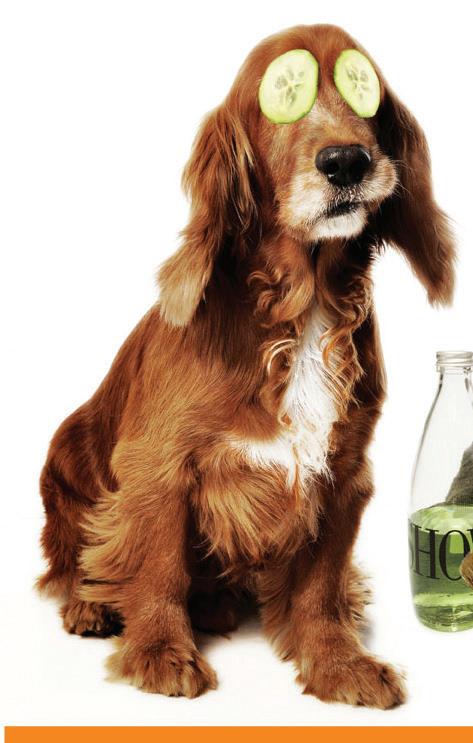
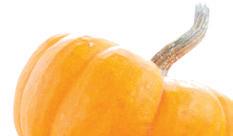






























Delmarva Unleashed Fall 2019 21 410-524-0075 Urgent Care • Lab & X-Ray No Appointment Needed • Orthopedic Supplies • Pediatric & Adult Care Pamper your pet “A happy pet is a beautiful thing.” 1496 Still Meadow Blvd. Unit A Salisbury, MD michellesprettypaws.com 410-742-0299 Professional Pet Grooming
Just An Impulse
 by Amanda Abresch, B.S., ABCDT, APDT, CPDT-KA
by Amanda Abresch, B.S., ABCDT, APDT, CPDT-KA



FFor all the times that I write about how different dogs and people are, there are quite a few ways that we are similar. Impulse control is one of those things that people, dogs, even horses, and monkeys can struggle with. Me?




I cannot keep chocolate chip cookies in the house- they are the one food I have trouble resisting. I would eat half a dozen without thinking about it. My dog will do just about anything for any food that isn’t lettuce. When I had a horse, he loved sweet potatoes. I’m not just giving you all this information to make you hungry, but to point out that most of us have struggled with impulse control at some point, and some of us still do. The good news I have for you today is that you can teach your dog to have better impulse control. I like the “leave it” cue. I think it can be an excellent tool for teaching a dog to disengage, and that is what makes a great, effective “leave it” a fantastic tool for training and everyday life.
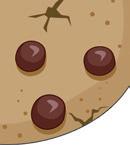

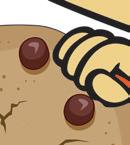


One important caveat- I teach a “leave it” where the dog has to start out looking away from (disengaging




from) a distraction. When you start, that distraction is the treat in your hand, and over time, it can be applied to anything. I have found this much more useful than a “leave it” where the dog just stares at the treat, or the dog gets yelled at or pulled away for going after a treat tossed on the floor. We need to teach the dog what to do, then apply it to treats on the floor, the cat, socks, etc. Furthermore, a dog who simply stares at anything when asked to “leave it” is not actually leaving anything. They are simply waiting and biding their time until they can have it, especially if history proves that if they stare long enough, they will get it. This becomes very dangerous for dogs who are reactive to other dogs (excited or otherwise). Staring is pretty rude in the dog world, not unlike the human world and can lead to conflict. It has been my experience that if a dog wants something- a treat, a cat, a bicycle, a toy; the more they stare at it, the more they have to have it. Just like those chocolate chip cookies calling out to me from the counter, it is hard to look away from something

20 Delmarva Unleashed Fall 2019
mayihempu.com


"Purity is not just about what you CAN see, but what you WON'T see. Trust a brand that has earned the US Hemp Authority certification"





21 Delmarva Unleashed Fall 2019
- DIDI FIGUEROA, AUTHOR, PARSON RUSSELL TERRIER MOM, OWNER/OPERATOR OF MAY I HEMP U.
B O U T C B D , B O O K F O R E V E N T S O R F O R B I S C O N S U L T A T I O N S , P L E A S E C O N T A C T : M A Y I H E M P U @ G M A I L . C O M V O I C E / T E X T : 3 0 2 - 3 5 8 - 5 3 5 5 M . M E / M A Y I H E M P U D I D I F I G U E R O A
just out of reach, but staring at them will almost never result in me walking away.
Teaching the Leave It cue:
Why: The Leave-it cue is very beneficial for both dog and owner. A dog who can leave something alone on cue is less likely to pick up something potentially toxic to him or her (many household items can be harmful to dogs, remember?). A dog who will leave something alone on cue is also less likely to chew up your shoe or your child’s favorite toy!
What: Leave-it is having your dog leave something (treat, toy, squirrel, cat, another dog) alone and ignore it. For example, if my dog is in the kitchen while I am making dinner and I drop a piece of food, I ask her to leave-it, since not all people food is good for dogs. On walks, if she sees a squirrel, I ask her to leave-it and allow her to smell the ground for as long as she wants after the squirrel is gone. This is rewarding for her-in exchange for not following squirrel up a tree; she gets to smell wonderful things!
-pocket/pouch full of treats
-hungry dog
-leash, attached to a collar or harness
-quiet, comfortable area
-patience!
How:
1. Start with a treat in your right hand. Place the treat in your palm and close your hand around it. Have your clicker in your left hand.
2. Let the dog smell and see the treat and lick your hand but not take it from you.
3. As soon as your dog stops licking/ smelling and looks away from your hand, say “leave-it,” click and treat from your LEFT hand!
4. Repeat!
5. Your dog will get to a point where they look away almost immediately from your right hand and look for the left hand. At this point, switch hands on your dog.
6. Place a treat in your left palm, with your hand closed around it. Have your clicker and reward treats in your right hand.
7. Let your dog see, smell, dig, lick, and chew for the treat, but do not let him/her have it. This side will probably go a little faster; your dog is getting a handle on the game.
8. As soon as your dog stops trying to get the treat out of your LEFT hand, say “leave-it,” click and reward from the RIGHT hand.
9. Repeat!
Tips:
It is vital that you give the reward from the hand that did not have the treat in the beginning, you want your dog to leave-it, not come back to it later!
With leave-it, your dog is learning that there are some things they can’t have and some things they can, but they have to wait for permission to take them.
22 Delmarva Unleashed Fall 2019
More:
After a few practice sessions, test your dog; Hold out your closed hand with a treat inside and ask them to ‘leave-it.’ If they go for your hand, say “oops,” “uh-oh,” or “nope” and remove your hand. Try a second and up to a third time. If they still go right after your hand, they don’t quite know the cue yet so take a step backward keep practicing as outlined above for a few repetitions before trying again.
1. As your dog progresses and understands the cue, offer your open hand with a treat on it and ask them to ‘leave-it’ If they don’t, simply close your hand, say “oops,” “uh-oh,” or “nope” and try again- reward once they do leave it alone. Again, if they fail this test three times in a row, take a step back to just your closed hand.
2. Once they master that, place a treat on the floor, closer to you than the dog (so you have more time to react if they get up!), and ask them to “leave it,” being prepared to cover the treat with your hand in case they try to steal it. If they leave it alone, then reward with another treat.
3. The next step is to drop a treat from (yourself in) a seated position, asking them to leave it. After your dog masters this with a treat, try with any items they may like to steal. This will be a very controlled situation, but it is a great way to start. You will then build in practice with those items as well.
4. Next, is you standing and dropping a treat, asking them to “leave-it” as you drop the treat.
5. Drop the treat, ask your dog to
‘leave-it’ and take a step away, Reward your dog for not going after the treat but be ready to step back and cover the treat with your foot just in case.

6. Drop the treat, saying “leave-it” as you do so and then step away. Call your dog to you, so they have to run past the treat to get to you. Be sure you have dropped the treat off to one side, so it’s easy for your dog to run straight to you, past the treat.
You can eventually place a treat on your dog’s paw and work on “leave it there!”
On walks, toss treats out in your dog’s path, asking them to leave it as you pass them. If your dog pulls toward the treats, step aside and hold the leash so that your dog can’t reach the treats, but go ahead and call your pup’s name or say “let’s go.” Don’t just pull your dog along to keep walking; wait for him/her to make the decision to walk away. Once they do, you will reward with verbal praise and petting. When your dog looks away from the treats within 2 seconds of you asking them to “leave it,” they have succeeded! Once he/she does this, you say “yes! good!”, and walk to the treats and say “find it!” as you point out one of the treats. Adding the find-it cue makes walking with you more fun since you sometimes point out tasty things!
Once your dog is really good, try the old treat-on-the-nose trick, by placing a treat on his/her nose and asking them to ‘leave-it’ until you say “ok!”
Delmarva Unleashed Fall 2019 25
EMBARKING On New Adventures
TThree time Telly Award-winning television producer, Tracy Rosensteel, has spent the latter part of her thirties traveling the globe and filming charismatic trailblazers who have overcome all odds in pursuit of their dreams. Airing nationwide on PBS, In Pursuit of Passion has been Tracy's platform upon which she reminds her audience that, with talent and perseverance, we are all destined for greatness - a lesson, no doubt, that Tracy has learned over decades of hard work and discipline she has practiced to achieve her own pursuits.
Now in her early forties, Tracy is embarking on a new adventure - one that is very near and dear to her heart. Having written, illustrated and published children's works since 2005, Tracy has created yet another children's property based on her biggest passion: her "man about town" French Bulldog, Little Boo.
 by Tracy Rosensteel
by Tracy Rosensteel
Often likened to, "Dr. Seuss meets Shel Silverstien," the Little Boo series inspires young readers' imaginations with Boo's adventures throughout one of our nation's most enchanting cities - New York.
"My children's books are only the beginning of my inspiration arising from owning Little Boo," said Tracy. "I became painfully aware of the plastic issue increasingly plaguing our planet after years of picking up after my dog. Through my research I learned more than 50 tons of plastic from dog waste bags is clogging our landfills per year in the US alone. I became focused on solving this issue and inviting all dog owners to help reduce the plastic footprint and its destructive impact it has on our planet."
Following years of research and development, Tracy is excited to launch her patented, "Pooch Paper:"

24 Delmarva Unleashed Fall 2019
a paper alternative to plastic dog waste bags. Pooch Paper is made with already recycled non-bleached paper fibers, is 100% biodegradable, 100% compostable, is manufactured using renewable energy, and its grease resistant coating is made from com.



"Everything is made in the USA and is very eco-friendly. The paper mill where my product is manufactured reduces its carbon footprint each day it's in production," said Tracy. "Plastics are toxic to almost all species and can create dangerous greenhouse gasses when disposed of in a landfill."
Tracy and her Frenchie, Little Boo, are very excited to shed light on a serious environmental issue and bring to the retail market a significant solution for an otherwise solvable problem.

"Sustainability starts with each and

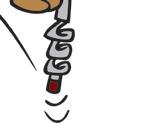




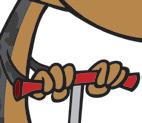





every one of us," said Tracy. "If we contribute one small effort such as switching a daily consumable from plastic to paper, we can all help make this planet a cleaner place."

Delmarva Unleashed Fall 2019 27 Amanda Abresch 443-614-7428 YourSmartPup.com
“Tater Tot, Tootsie & Little Miss”
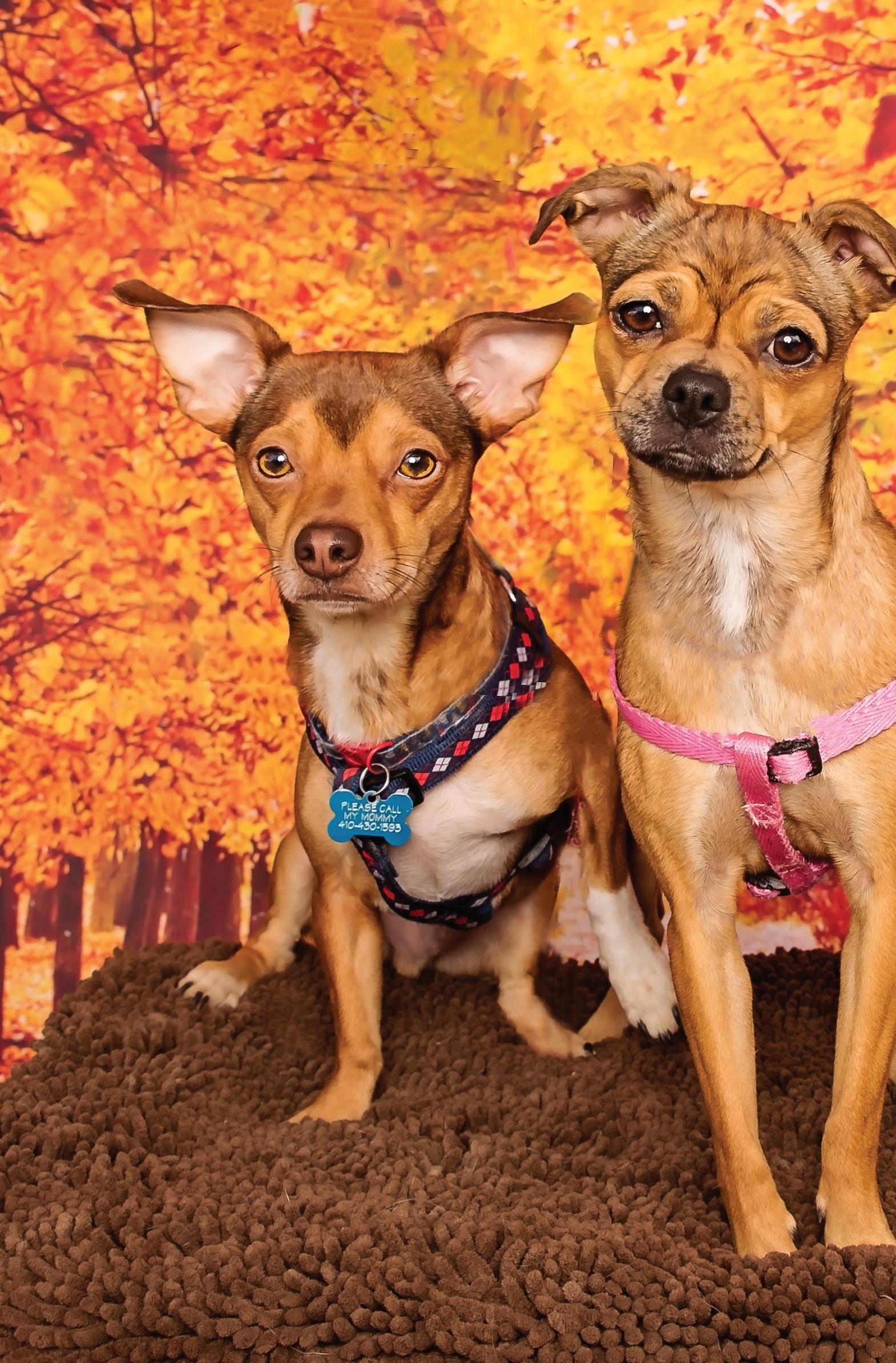 Photographed at Pooch Palooza
Photographed at Pooch Palooza
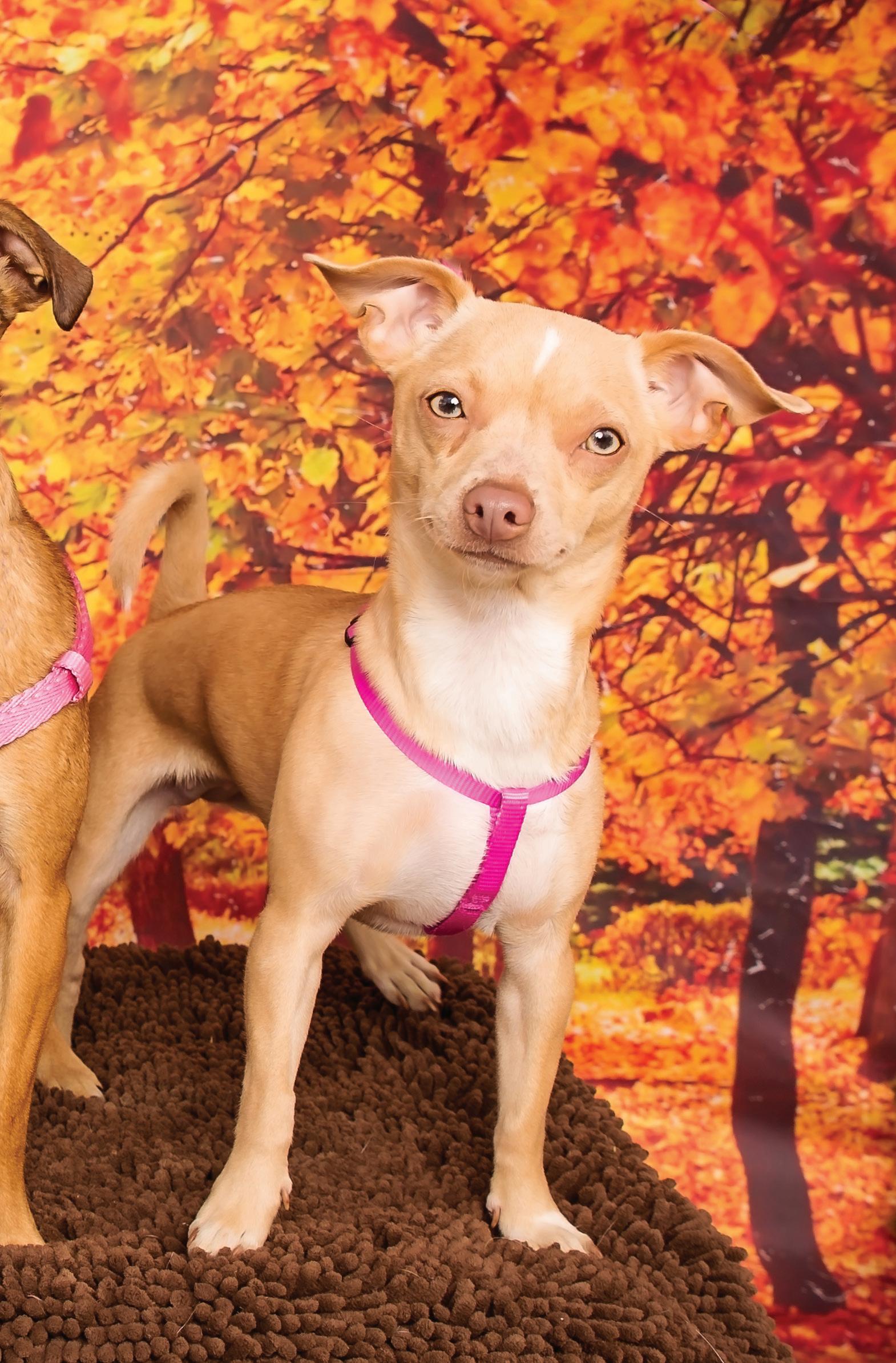 T. Verdent
T. Verdent



Nine Human Foods You Should Be Feeding Your Dogs by
Having your dog in top condition and excellent health is of prime importance to every good dog owner. And even though you know that feeding your dog tidbits from your plate is not recommended, it is sometimes very hard to resist those pleading eyes staring up at you from beneath the table. There are also a surprising number of human foods that are very beneficial to your dog's health. Here are the best and healthiest human foods to feed your four-legged friend.
Fatty Fish
Fatty fish are a great source of protein, calcium, niacin, selenium and omega-3 fats, for dogs. They help to support proper brain function and keep dogs' coats shiny and healthy. However, it is best to avoid more substantial fish, like tuna, as they are likely to contain higher levels of mercury. Note that care should be taken when feeding any fish to be sure your dogs do not ingest bones. Canned wild salmon is an excellent choice, and quality brands are bone free.
Eggs







As an excellent source of protein and a good source of linoleic acid and vitamin A, eggs are the perfect food for keeping a dog's skin and coat in top condition. Eggs should always be served fully cooked, as raw or partially cooked eggs can contain salmonella. Whatever your preferred preparation method - boiled, scrambled, poached, or sunny side up - as long as it's cooked through, your dog will be begging for more.
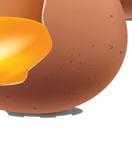

28 Delmarva Unleashed Fall 2019
Peanut Butter



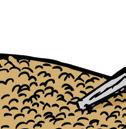
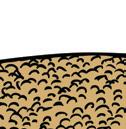
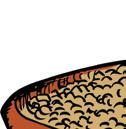

Peanut butter is a firm favorite with dogs. It is also able to provide them with a very healthy treat. It contains vitamin B, vitamin E, niacin, and healthy fats. The best kind for your dog's health is raw, unsweetened, and unsalted peanut butter. Never feed a brand which contains xylitol. Always check the ingredient list as xylitol is toxic to dogs!
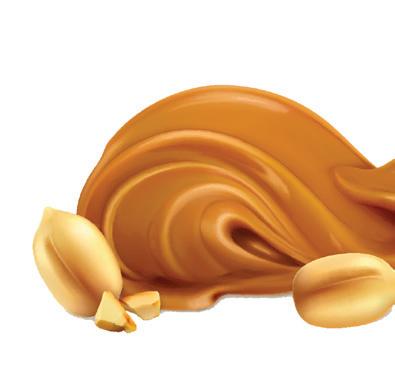
Coconut Oil
Coconut oil has a host of health benefits for humans and dogs too. High in fat-burning, healthy, saturated fat, it is a quick source of energy for your dog's brain and body. The oil also retains moisture, conditioning your dog's hair from within, while at the same time providing nourishment for his skin.
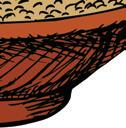


Peas





Peas are a rich source of vitamin K, vitamin B1, and vitamin B6. Vitamin K is an essential nutrient in bone health and increases bone strength as well as density. Along with strengthening weak bones, peas are also gentle on the digestive tract. And incorporating them into your dog's meals couldn't be easier; simply add a scoop to your dog's favorite dinner.
Oatmeal is just as nutritious, wholesome, and healthy for your dog as it is for you. It is an excellent source of fiber, which aids digestion and regulates blood glucose levels. Cook the oatmeal in the same way as you would cook it for yourself, just be sure it doesn't contain any additives or sugars. Organic steel cut would be the first choice for both humans and canines.
 Oatmeal
Oatmeal
Lean Meat
Chicken, pork, and beef are lean meats that contain high quantities of B vitamins and protein, which are responsible for maintaining high energy levels. Be sure to avoid cuts of meat containing visible fat, and consider feeding the meat to your dog either raw or medium-rare.






Carrots
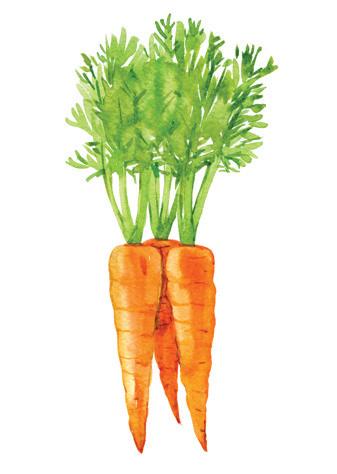
The firm, crunchy texture of carrots provides dogs with a very easy means of maintaining good dental health. The scraping action of carrots against your dog's teeth is an effortless and effective way of removing any plaque build-up, thereby protecting against tooth decay. They are also a good source of vitamin A, potassium, and fiber.
Yogurt

















Plain, low-fat yogurt is an excellent source of calcium and offers pro-biotic benefits to a dog's digestive system. Always be sure to choose yogurt without added sugars, sweeteners, or fruit. Some dogs can also become lactose intolerant after weaning and might struggle to digest dairy products.

Your dog doesn't need to give up his favorite kibble to enjoy these health benefits. Try supplementing his regular meals with some of these foods, or even using these snacks as a special treat. Just remember that these food sources should supply no more than 25 percent of your dog's nutritional needs.

30 Delmarva Unleashed Fall 2019

Review and Update on Pain Medications for Dogs
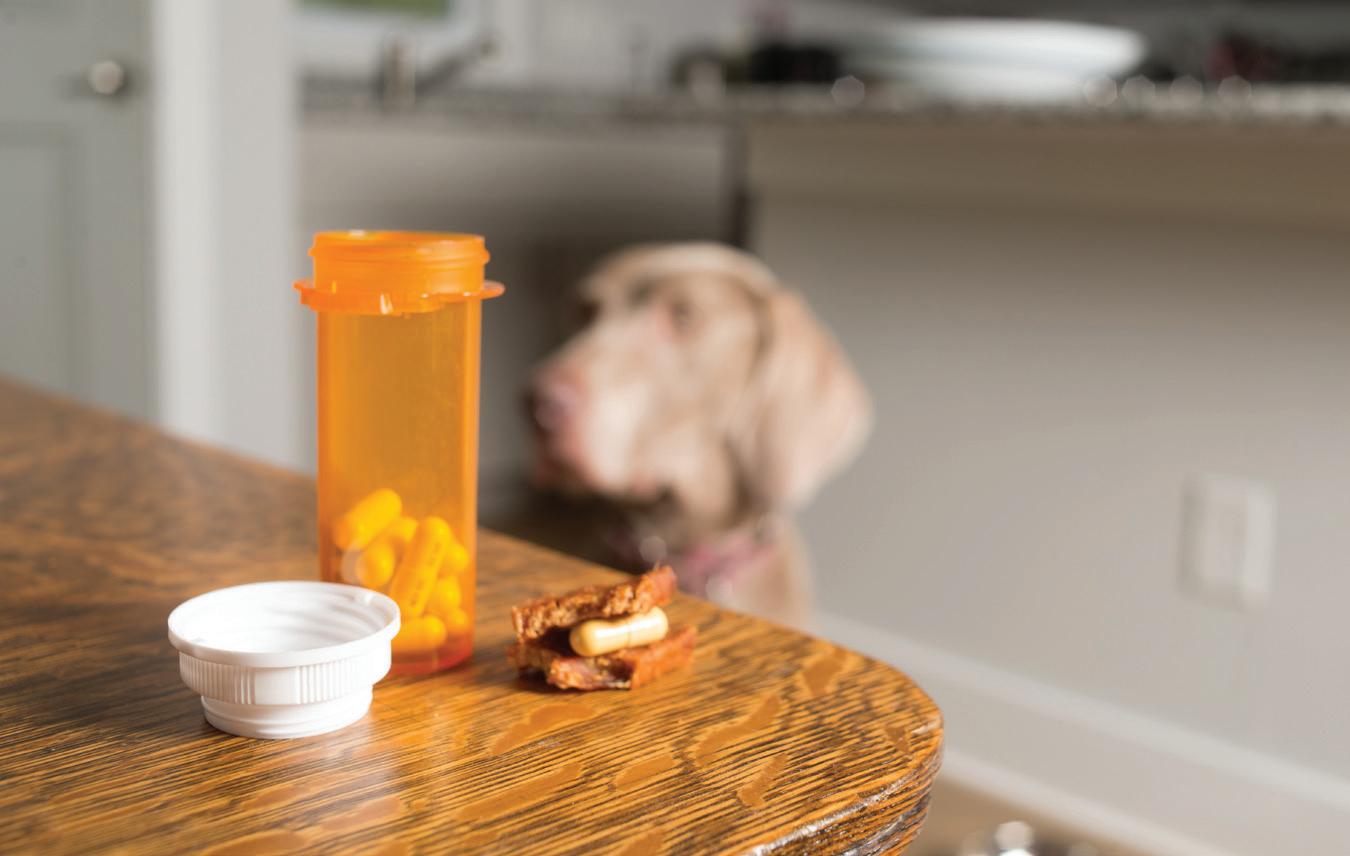 by John Maniatty, V.M.D.
by John Maniatty, V.M.D.
Pain is broken down into two types acute and chronic. Acute pain is a single traumatic episode caused by thermal, chemical, or mechanical damage to tissue. Chronic pain is the body’s response to perpetual trauma or the body’s continued response to the acute severe trauma. Osteoarthritis is the most common cause of chronic pain, and cancer is the second most common cause (1). Trauma initiates a three-nerve network to register the pain (2).
The first nerve is the nociceptor. These are free nerve endings that fire when the damage occurs and transmits the signal to the spinal cord. At the site of the nociceptor, the body accentuates
or dampens the nerve firing. So initially the pain is great and triggers a withdrawal response. Over time the nerve firing is decreased to diminish the pain. In rare cases, it does not decrease, and this causes chronic pain. Local anesthetics dampen the nerve firing so withdraw does not occur, and surgery can be accomplished.
The next nerve is in the spinal cord dorsal horn; further modulation occurs accentuating or weakening the signal (2). This connects the nociceptor/ peripheral nerve to the brain. In the brain, it goes to the thalamus. This is where the signal can be decreased by anesthetics like ketamine or pain meds like amantadine. The thalamus then
32 Delmarva Unleashed Fall 2019

transmits the message to the other areas of the brain for interpretations of pain and how to respond.
Pain medications tend to be specific for where they work on the pathway, and this helps determine how fast and how much pain control occurs.
Non-steroidal anti-inflammatory drugs (NSAID’s) work by limiting inflammatory mediators like prostaglandins and cytokines. These are chemicals released by cells involved in the inflammatory process. Prostaglandins are synthesized when cells release arachidonic acid and then convert it with the isoenzyme cyclooxygenase (COX) to prostaglandins. COX1 are found in many areas of the body and help regulate platelet function, smooth muscle control, and stomach acid protection. COX 2 is found specifically at sites of inflammation.
NSAIDs are classified by where they work in the process. COX1 inhibitor, aspirin, thins the blood, decreases kidney blood flow, and has greater G.I. effects. These are not recommended for chronic pain treatment due to the side effects, but they are used when the is a concern for blood clots to occur.
COX 2 inhibitors; Carprofen, Meloxicam, Firocoxib, Deracoxib, and Etodolac; are the preferred NSAIDs. Newer to the market Grapiprant works by inhibiting the production of prostaglandin E2 and does not affect the COX or create any of those side effects.
Cytokines are produced by most cells; more specifically white blood cells; and they bind to receptors, and either signals them to upregulate or
down-regulate. This spreads or diminishes the inflammatory response. NSAIDs inhibit the production of specific cytokines and decrease inflammation through this process. Unfortunately, by the time inflammation has occurred, prostaglandins production and cytokine release has occurred. NSAIDs take time to reach the site and then can start working on diminishing the pain. This is why they are used for chronic pain.
Opioids are found naturally in the body, and we synthetically make them to work on the same receptors to diminish pain. Opioid receptors are found throughout the nervous system and other parts of the body. Opioid receptors are broken down to 4 types with decreasing analgesic (pain-relieving) properties- mu, kappa, delta, and sigma. Mu receptors give the greatest analgesia, and they are the only ones used in veterinary medicine. Opioids drugs are further broken down to agonists, partial agonist, mixed agonist/antagonist and antagonist. (3) Agonist binds tightly to the receptor and blocks the pain transmission signal. Examples are hydromorphone, codeine, morphine, and oxycodone. Partial agonist like buprenorphine bind loosely to the receptor and decrease the pain but do not provide the full effect. Agonist/antagonist, for example, butorphanol, bind and diminish or block pain transmission at some receptors allowing complete transmission. Antagonist block receptors so agonist or the bodies own natural opioid cannot bind to lessen the pain sensation (3). Naloxone is a drug that does this and is why it is used in opioid drug overdoses.
34 Delmarva Unleashed Fall 2019


Save 15% every day with code Delmarva Unleashed! FriendshipCollar.com 10/30/2019
The drug can be delivered in several routes. Liquids forms come as oral or injectable forms. Most oral forms; pills, capsules, and oral liquids; generally take longer and get lower concentrations in the blood stream then the injectable forms. Transmucosal dosing uses mucosal membranes in cheek or under tongue, administration of buprenorphine in one study showed that it would reach equal blood concentrations with injectable form given IV. (4) Transdermal forms can reach effective levels in the blood and can be slowly released over several days. It is beneficial for those that cannot give oral medications. Injectable forms can be administered intravenous (IV), epidural, intramuscular (I.M.), or subcutaneously (S.C.). The time for it to take affect differs with the route of administration. IV and epidural is faster then I.M., which is faster then S.C. These are all faster then oral, except transmucosal administration. Tablet or capsules go oral and take longer than injectable.
Alpha 2 medications work on the presynaptic receptors. Synapses are areas where two nerves meet. Presynaptic means the receptor is on the nerve that will be releasing the neurotransmitter that triggers the next nerve to fire. Examples are xylazine and dexmedetomidine. These medicines give sound pain reduction and sedation. The other benefits are they are reversible and work synergistically with opioids. They come in injectable and oral form. They are suitable for acute pain, but when used, synergistically can help with chronic pain (2).
Local anesthesia meds work by blocking the sodium channels on the
nerve and do not allow it to depolarize to transmit the signal. Examples of local anesthetics are Lidocaine and Bupivacaine. Lidocaine lasts about 2 hours, and bupivacaine lasts 6-8hours (2). Bupivacaine, when mixed with dexdomitor, can last up to 24 hours.
CBD is still in the infant stage, and benefits or non-benefits are yet to be known. One study recently demonstrated that it increases comfort and improves activity (5). With that being said it is unregulated nutraceutical. That means there are no tests per batch that are required for a company to sell their product. Variability can be significant, and fraud can occur without much risk of being caught. The FDA has completed studies on CBD and found that the majority do not contain the amount if any of CBD oil listed. Moreover, the claims are unsubstantiated at this time. CBD is buyer beware.
When using pain meds, it is usually multi-modal to achieve the best control. What that means is that we use a combination of medications to achieve the best control. For example, in spay surgeries, we use preoperative pain meds, i.e., NSAID and opioid, to prevent pain receptors from being stimulated. Then before finishing closing we give an injection of local anesthesia to help soothe the incision site postoperatively. We then send patients home with an NSAID to continue to control pain.
(1) Grubb, Tamara, DVM, PhD, DACVAA . “Beyond NSAIDs: Treatment of Chronic Pain in Dogs.” VIN, Atlantic Coast Veterinary Conference 2017,Oct2017,www.vin.com/ members/cms/project/defaultadv1.aspx?id=8207660&pid=19448&.
Continues pg. 20

36 Delmarva Unleashed Fall 2019
S.A.R.A. Search and Rescue Assist, Inc.
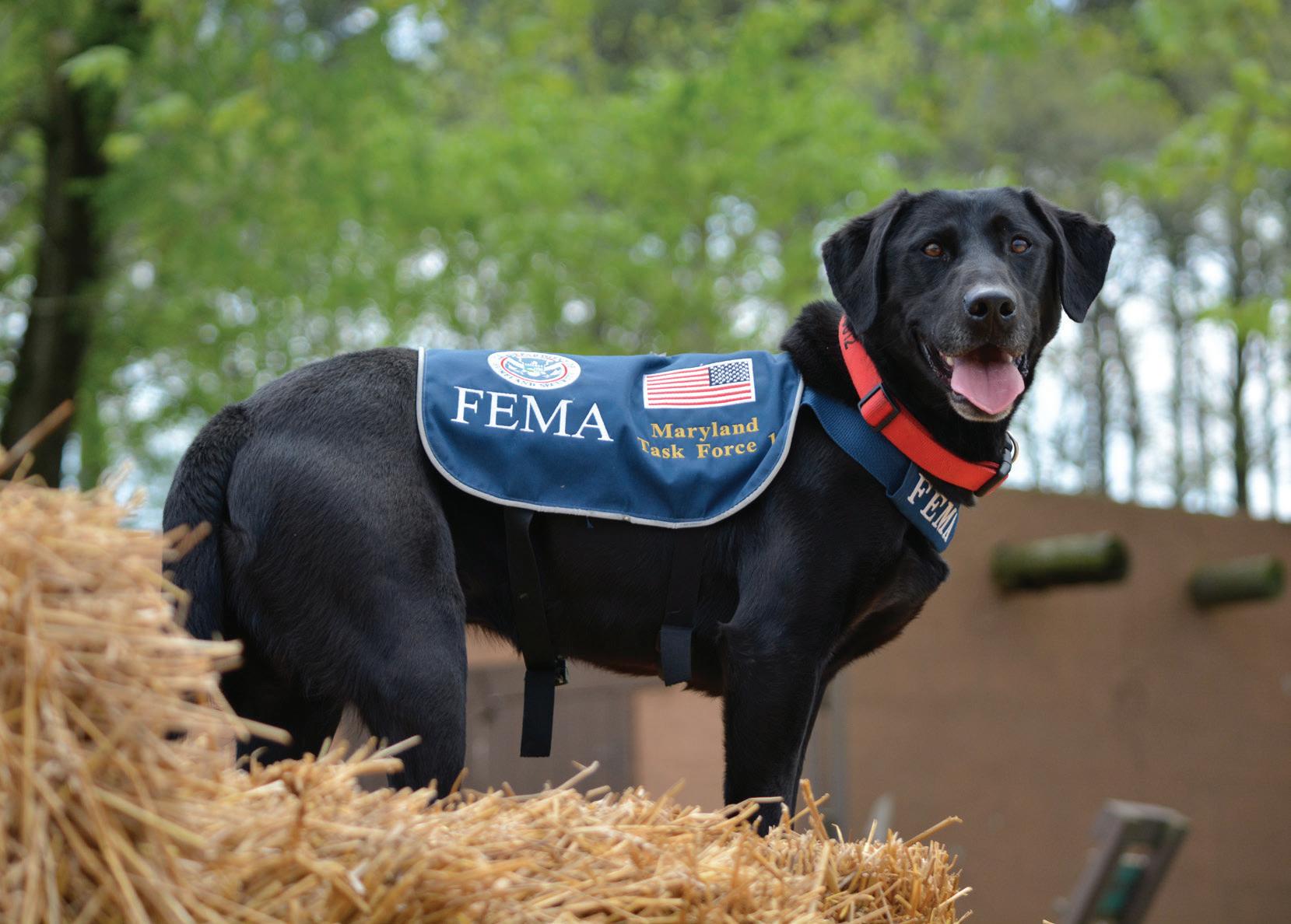
37 Delmarva Unleashed Fall 2019 searchandrescueassist.org
Search and Rescue Assist, Inc. is dedicated to the training and support of search dogs that work in disaster environments. These special dogs are specifically trained to perform in extreme surroundings to find people who are trapped as a result of natural disasters or terrorist actions. S.A.R.A. is a 501(c)(3) organization. Your donation is tax deductible Your donations help fund: -the disaster training facility in Linthicum, MD -facilitate specialized training all over the country -help provide training grants for handlers Thank you for your support!
Your Smart Pup with


 Amanda Abresch
Amanda Abresch
Reader Submitted Questions






I don’t know if this is a good question or even an appropriate one, but why do kids get bitten by dogs so much? Is this just media hype, or is there an actual problem?

I think it’s a great question, actually! There are a couple of different components to your question, so I will try to approach each one.

Just like everything else, it does seem that a child getting mauled by a dog can get more views (or sell more papers for those who are “old school”), so I see how the goal of selling can influence what is shown on the news or the stories that get printed. That’s one part.
Next, we can look at understandable old statistics:
1. It is estimated that there are about 78 million dogs living in homes in the US, and with the total US population is about 327 million, we wind up with one dog for every four people in our country. What does that matter? It gives you an idea of saturation- we have a lot of dogs and a whole lot of people. With a lot of any population, some conflict is bound to happen.
2. In 2017, there were shy of 350,000 people treated in emergency rooms for non-fatal dog-related injuries.
3. Of that almost 350,000 people treated, over 10,000 were children under the age of two years who were in the ER as the result of a dog bite. Now, that is only 3 percent of the people who were treated in the ER with non-fatal injuries, so in terms of percentages, it’s not a terribly large number. That isn’t to say that over 10,000 kids under two injured in a year is something we should ignore.
Last, the training/behavior part. I believe that is a frightening statistic, and it means we are failing in two important aspects of life- educating our kids (and ourselves) about dogs on how to recognize fear, anxiety, and aggression in dogs. The truth is that a lot of kids are bitten by a dog every year and that often, those are preventable bites. To me, the issue is not so much whether or not kids are getting bitten too much- any kid bitten by a dog means that a kid is being disrespectful of a dog’s space and/or a dog is reacting too strongly to something done by a child.
38 Delmarva Unleashed Fall 2019






























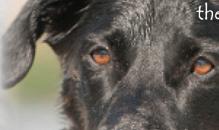









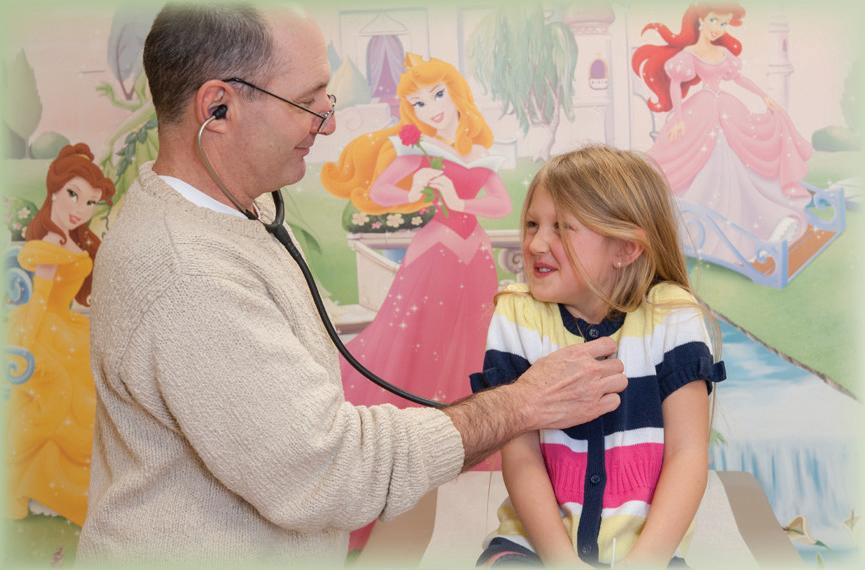


DelmarvaUnleashed.com Looking for a paper copy of DU? Just visit our sponsors! OR visit our website and sign up for home delivery. 410-213-0119 Open Year Round Insurance Accepted 12547 Ocean Gateway, West Ocean City Lab & X-Ray No Appointment Needed Orthopedic Supplies Pediatric & Adult Care WestOCInjuryCenter.com URGENT CARE Superior Care In A Warm Environment. Where the Locals Go! Delmarva Unleashed Fall 2019 41
Imagine how older dogs (over the age of 5) would typically treat a puppy under the age of six months. The puppy will probably jump on and nip at the older dog and the older dog would respond by walking away, ignoring it or giving a warning growl. A puppy well versed in canine would stop the annoying behavior with those warnings. As puppies get older, if they still offer those rude behaviors, the older dog may offer more intense warnings since the puppy is old enough to understand what is and is not appropriate. It would be rare for an older dog without a history of issues with other dogs to be harsh to the point of biting (or worse) with a puppy under 6 months. The same is generally true for small humans. Dogs usually recognize young kids as what they are and allow space and time for the child to grow up and mature. When dogs react with biting when a small child does something like grab a toy or step too close to the food bowl, it indicates that the dog has a low tolerance for frustration and probably a history of guarding.
Kids who step too close or grab dog’s face to squeeze it have not been educated by their families on the importance of respecting a dog’s space. Yes, a kid should be able to walk through a kitchen containing the dog bowl, but a dog should not be expected to happily accept too tight hugs and constant grabbing from a child.
While it is great to have a tolerant dog- heck, I have a dog who is very tolerant of kiddo shenanigans; it can set our kids up for failure with any other dogs out there in the world. There are great resources out there for kids and dogs, and if you have a dog who is reactive to kids (or anything),
you should contact a certified trainer who uses non-coercive methods. I know I tell you all this every time, but with behaviors like guarding and reactivity especially, the last thing you want to do is introduce a physical punishment.
For Children:
• Never approach an unknown dog or a dog that is alone without an owner, and always ask for permission before petting a dog.
• Never approach an injured animal –find an adult who can get help.
• Never approach a dog that is eating, sleeping or nursing puppies.
• Don’t ever poke, hit, pull, pinch or tease a dog.
For Dog Owners:
• Never leave a baby or small child alone with a dog, even if it is a family pet.
• Interactions between children and dogs should always be monitored to ensure the safety of both your child and your dog.

• Teach your children to treat the dog with respect and not to engage in rough or aggressive play.
• Make sure your pet is socialized as a young puppy so it feels at ease around people and other animals.
• Never put your dog in a position where she or he feels threatened.
• Walk and exercise your dog regularly to keep them healthy and to provide mental stimulation.
• Use a leash in public to ensure you are able to control your dog.
• Regular veterinary care is essential to maintain your dog’s health; a sick or injured dog is more likely to bite.
• Be alert, if someone approaches you and your dog – caution them to wait before petting the dog, give your pet time to be comfortable with a stranger.
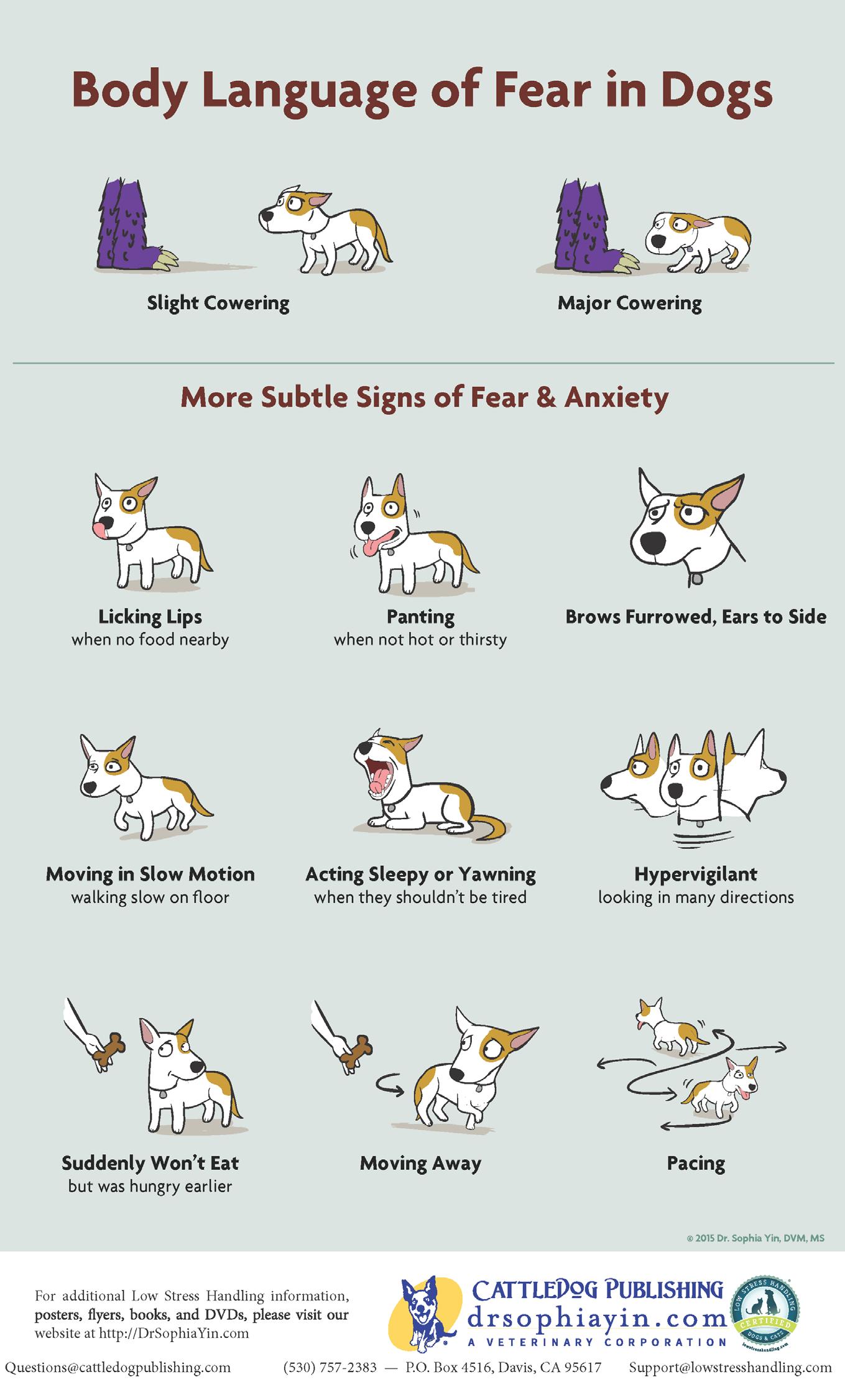
Delmarva Unleashed Fall 2019 43
How Much CBD do I Use?
 by Adiris (Didi) M. Cordero-Torres de Figueroa
by Adiris (Didi) M. Cordero-Torres de Figueroa
“Ijust want to give her the entire bottle so I can help her,” exclaimed Beth with a worried look in her eyes. I’ve been there! Knowing that your furbaby is looking for comfort, and is unable to find relief is unbelievably difficult. As Pet parents, we know that WANTING to help and actually helping are two different things, particularly if we just “freestyle” it. With CBD, not only does quality matter (not all CBD is created equal) but QUANTITY matters. Sometimes, less is more. So, How do we know how much CBD to really offer our bubbies? Here are some things to consider:
1) Age of the Pet - is she/he just being a frisky puppy, or is there a true need? There is a difference between a true “out of balance” Endocannabinoid system (ECS) and a puppy in need of more interaction, activity (going on more walks) or being given some outlet to expend their excess energy.
2) Your goal - What are you looking to do for your furbaby? Are you simply trying to supplement for general health in an otherwise healthy pet? Is there a genuine medical need that is either actively being treated by a veterinarian or holistic provider? Are you trying to AVOID having to resort to pharmaceutical options or something else altogether? Pinpointing exactly what your goals are is an essential part of incorporating CBD in your pet’s care regimen, particularly if they have an already compromised system.
3) Budget - Buying CBD is not the place you want to skimp when it comes to our kids, be it the two-legged variety or four. Cheaper is not always better, and if you see a brand advertising as the best thing since sliced bread, but it is bargain basement pricing, take a deeper look at their ingredients, method of extraction, farming practices, etc... Chances are, they are
42 Delmarva Unleashed Fall 2019
skimping on methods that are more costly in all these areas, which is why they can charge less for their offerings. It is costly to use a CO2 extraction method versus using harsh solvents that could end up in your body. Cheaper could cost you more in the long run if the purity is not there. If cost is a concern, look for a brand that not only has received certification from the US Hemp Authority (only 13 brands have passed the strict auditing process which confirmed that what is on the label is actually IN the bottle. Using one of these 13 companies is a good place to start. If you are committed to using CBD for your pet, look for a company that has a loyalty program or offers referral incentives (where if you refer others who buy, you earn free product). This is a terrific way to still have access to a high-end product without breaking the bank!
4) Weight of your Pet - Generally speaking in the veterinary world, the “long” answer is to “dose to the animal,” which is when a complete history and whole pet approach is used to determine a serving size The dog’s age, weight, current meds, current medical conditions, activity level of the pet... What diet is it on? What are its sleep habits, etc... It takes into consideration the ENTIRE history of the pet and what the end goal is. An otherwise healthy pet of similar weight and age, for example, may need to have a serving that is drastically lower than one with a compromised system that is in severe cannabinoid deficient, as well as the medical concern that requires supplementation or intervention. The short answer is, generally speaking, you can go by the
weight of the dog to get a good baseline approach, serving size increasing as the weight of the pet increases (up to 20 pounds can use 4 to 8 drops 250 mg CBD oil, 21 - 45 lbs can use 8 to 12 drops of 250mg, 46-74 lbs may use 12 to 16 drops and over 75 lbs may benefit from 16 to 20 drops of 250MG of pet specific CBD oil. Of course, these are very broad suggestions not brand specific, each brand has a guideline for a serving suggestion, but it is a good indicator of where a serving size should be if the brand in use is pure, potent and optimally certified by the US Hemp Authority.
Since hemp is a detoxifying plant, it is best to split into two servings and give with the AM and PM feedings. Administering orally is king, not mixing it in the food, but actually in their mouth or letting them lick it off your hand. Also, remembering the “less is more” approach, start with a few drops and work up to the full suggested serving. This is because, imagine if your bubby’s ECS is thirsty, and your response was to place it in front of an open fire hydrant to rehydrate! Less IS more. Also, low and slow gives you a great way to notice subtle changes, so that you can drill down the EXACT serving size that is tailored to their need, regardless of what the “suggested” serving is (“dose to the dog”).
Regardless of brand, keep your oil away from heat, as heat degrades active CBD. As always, keep in mind that CBD is a supplement used for general wellness to replace cannabinoids the body is not producing in sufficient quantities to maintain homeostasis (balance). It is not meant to treat, diagnose, prevent or cure any
Bone Appetite

Always supervise your dog with food, particularly frozen treats, bones or anything that could pose a choking problem!



Dehydrated Cottage Cheese

Making homemade dog snacks gives you peace of mind with regards to ingredients. While some dogs, just like humans, are lactose intolerant, many enjoy dairy, including vanilla ice cream, milk, and cheese.
If you're looking for that something different for the pups this Halloween, try dehydrated cottage cheese. When shopping for cottage cheese, look for a brand that is low in fat. It's a healthier choice, from the calorie standpoint, and your bake time from start to finish will be shorter with a lower fat version. Be sure to read over the ingredient list of the brand you purchase. Avoid high sodium versions (it's not healthy for the dogs, just like humans) and avoid preservatives, fillers, and any artificial ingredients. Remember the fewer the ingredients on the label, the better.
Preheat your oven on the lowest possible setting. Line a cookie sheet with parchment paper. Dole out portions of cottage cheese, directly onto
the parchment paper, that are relative to the size of your dog. Be sure the portions are spread thin for faster dehydration time. Thicker portions will take longer, making a more chewy cookie than a light crispy treat. Turn the treats over as they begin to dry and remove them from the oven just as they begin to brown.
There is no real set time for drying as it is genuinely is relative to the amount of fat in your cheese. Keep a watchful eye as you learn how to make this delectable treat your dog will just love.

For a little added fall color, consider adding a tablespoon of pumpkin to your cottage cheese and mix well before portioning on the baking sheet.
Note that cottage cheese is excellent at taking on a variety of flavors. Some dogs enjoy a dash of rosemary and others a few finely ground mint leaves added to the mixing bowl make a nutritious breath freshener.
44 Delmarva Unleashed Fall 2019
disease or condition, or replace the advice of your medical professional. I am not here to offer medical advice, nor would I ever discourage you from seeking it from your medical professional or holistic provider of choice. I do not claim to diagnose, treat, prevent or cure any disease or condition, but I do aim to hempducate and support your desire to introduce CBD on your terms, at your own pace, in your wellness plans for yourself and your furry family members! If you need help talking to your vet about CBD, please feel free to ask me for a Veterinary Cannabis Guide consult at MayIHempU@gmail.com or via messenger m.me/MayIHempU, and I will be delighted to assist. CBD you later!
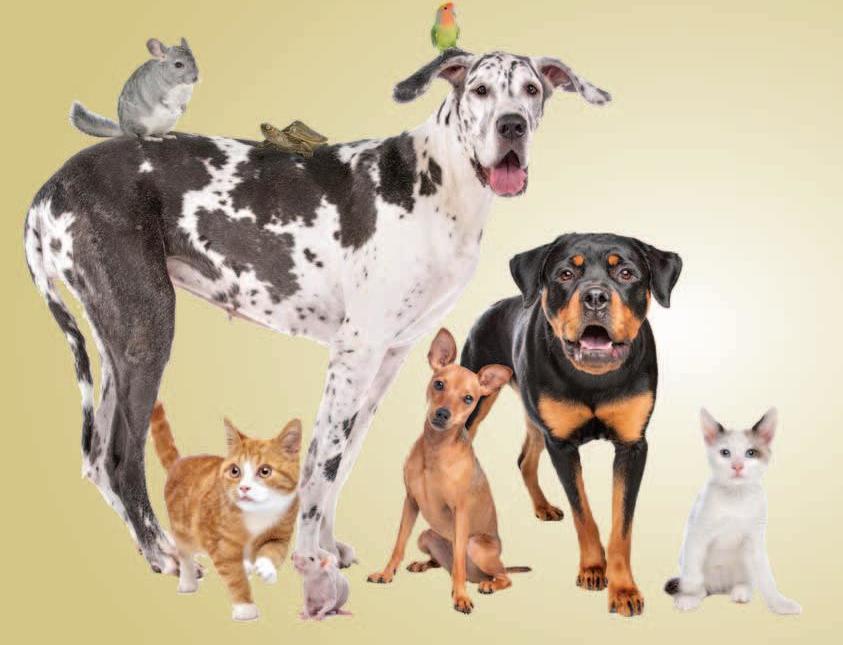

For a complete list of companies currently certified by the US Hemp Authority visit USHempAuthority.org/ certified-companies

Delmarva Unleashed Fall 2019 47
ocean city convention center 40th st. ocean city, md www.oceanpromotions.info • events@oceanpromotions.info Ocean City ULTIMATE AIR DOGS ULTIMATE LURING A TON OF FUN FOR YOU & YOUR POOCH! Pet Products • Services Adoptions + Valuable Info for you and your pets ENTER TALENT & COSTUME CONTESTS - PRIZES AWARDED! Please visit our website for items required for pet admittance to the Show.
Scorpions in my rental unit?
by Polly Elliott
If you're traveling with your pet to an warmer region of the country, as the weather begins to cool, you may not be up on your knowledge of scorpions since they are not Shore residents. Any time you travel with your pet, you should take a few moments to research local pest. Identify them and how they might impact your stay, particularly if you're in a rental unit. Venomous snakes, ticks, mites, spiders, and yes scorpions are just a few pests that could pose problems for the inquisitive pup. It's always good practice to know where a pet ER or 24-hour veterinarian is when on holiday with your dog.
There are two categories of scorpions, venomous and nonvenomous.
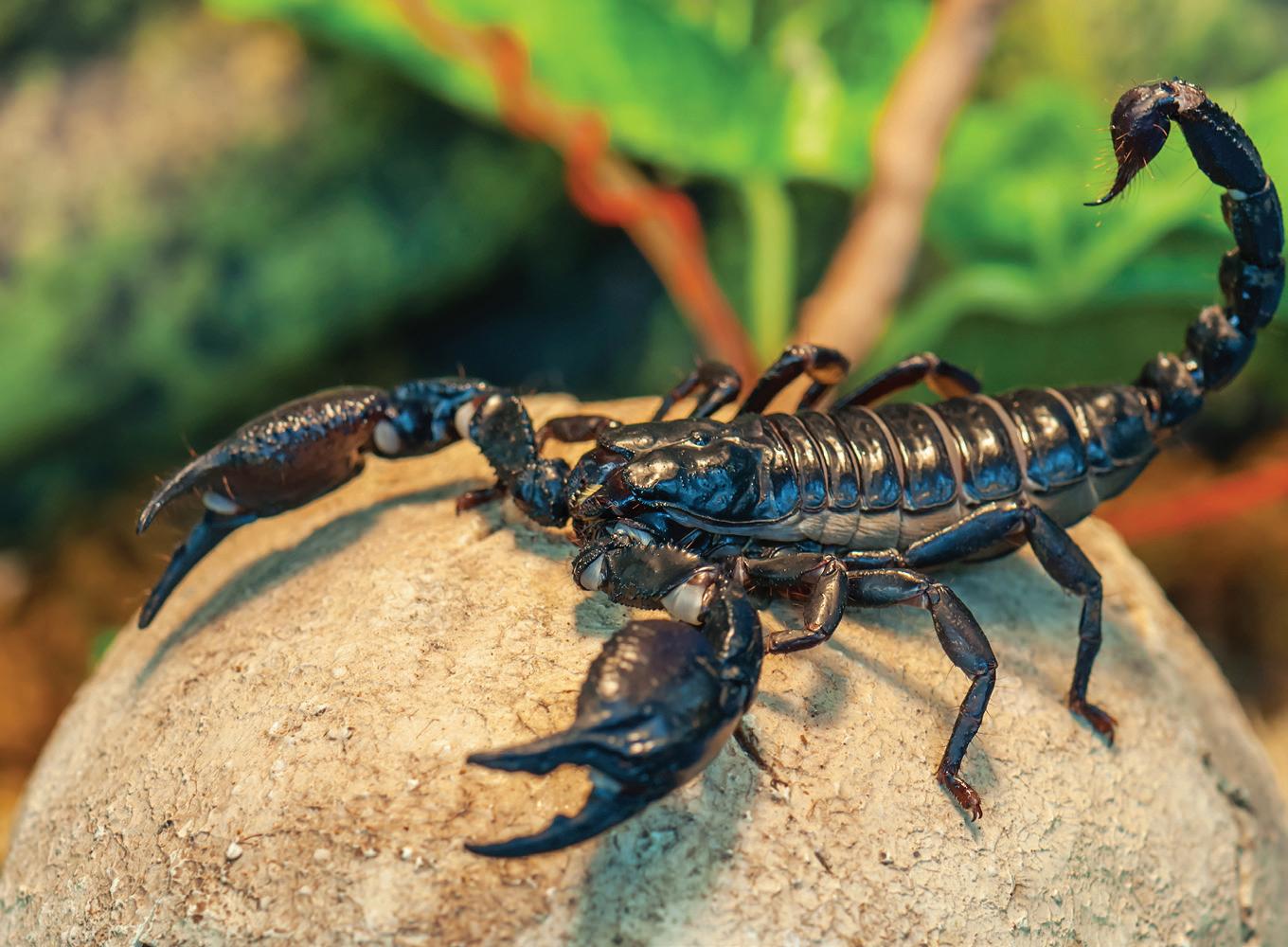
Even the sting of a nonvenomous scorpion can cause problems for smaller dogs, the sting itself can be quite painful.
The old tried, and true home remedy for wasp and bee stings applies in this situation. Mix a paste of baking soda and water and apply it liberally to the sting. It should help with the pain and your dog to settle a bit.
Venomous scorpions, of course, pose a larger health risk. Call the vet you previously identified immediately for the protocol for the local species and try to keep both you and your dog calm. Anytime venom is injected into the body, any body, excitement circulates it throughout the body faster - calm is critical. Your dog will also
46 Delmarva Unleashed Fall 2019 Canine Travel
sense your excitement and feed off that making the situation even worse. Set the example.
Take a photo of the scorpion if you see it, so that the professionals can expedite treatment, knowing exactly what they are dealing with.
Scorpions tend to be nocturnal and will fluoresce under black light. Hardware stores in arid climates often sell long sharp tools to kill scorpions. The specialty tools are designed to pierce the hard exoskeleton. Squashing a scorpion under your shoe is not always effective as many can flatter themselves as flat as a coin to avoid loss of life. My first call would be to the rental company for an exterminator; however, it's unlikely you will have a call returned during the wee morning hours. Have a plan.
It's also a good idea to be sure your dog it up to date on immunizations before traveling. Ask your vet about any travel risks associated with your destination.

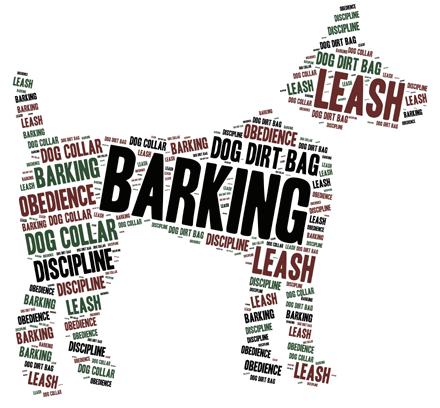
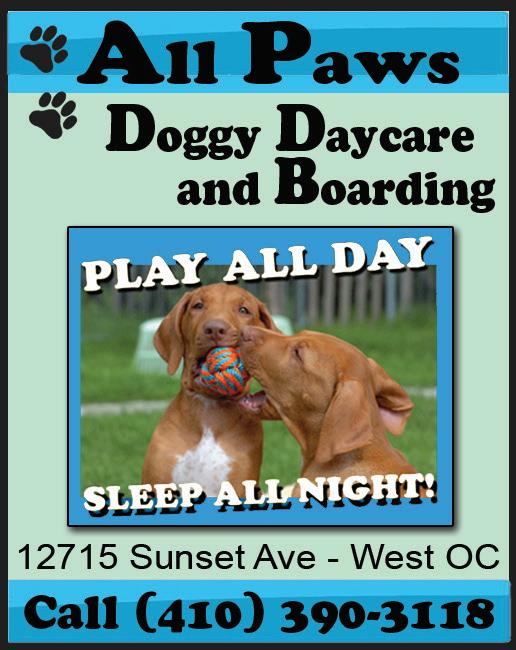
Symptoms of a scorpion sting vary from mild to severe and may include:
Pain
Change in behavior
Difficulty breathing
Drooling
Pupil dilation
Vomiting
Excessive urination
Diarrhea
Difficulty swallowing
Arrhythmia
Hypertension
Delmarva Unleashed Fall 2019 49
your message with over 220,000 dog people in DU!
Share
Doggie Socials
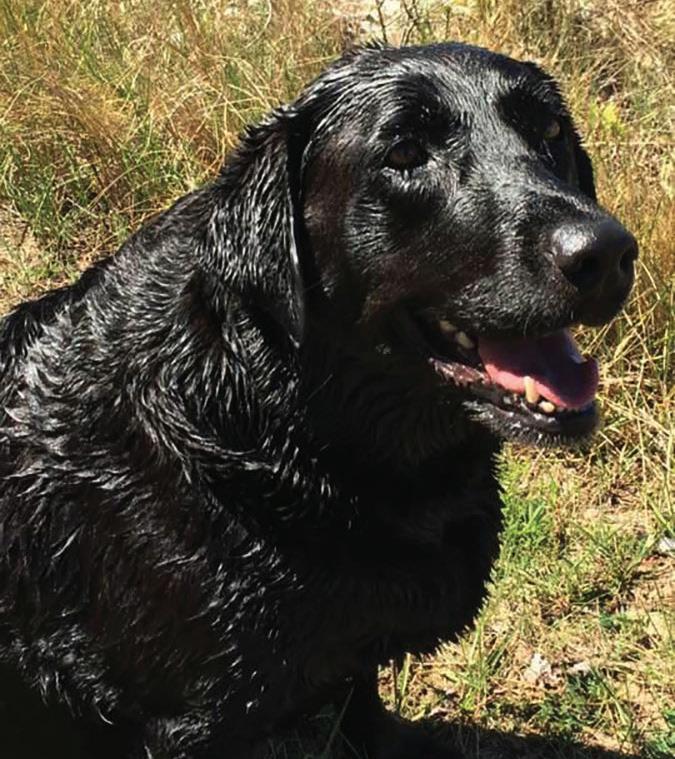



 Reader Submitted Photos
RogieNewark, DE
Dino - Harrington, DE
Annie, Greensboro, MD
Raven - Allen, MD
Reader Submitted Photos
RogieNewark, DE
Dino - Harrington, DE
Annie, Greensboro, MD
Raven - Allen, MD


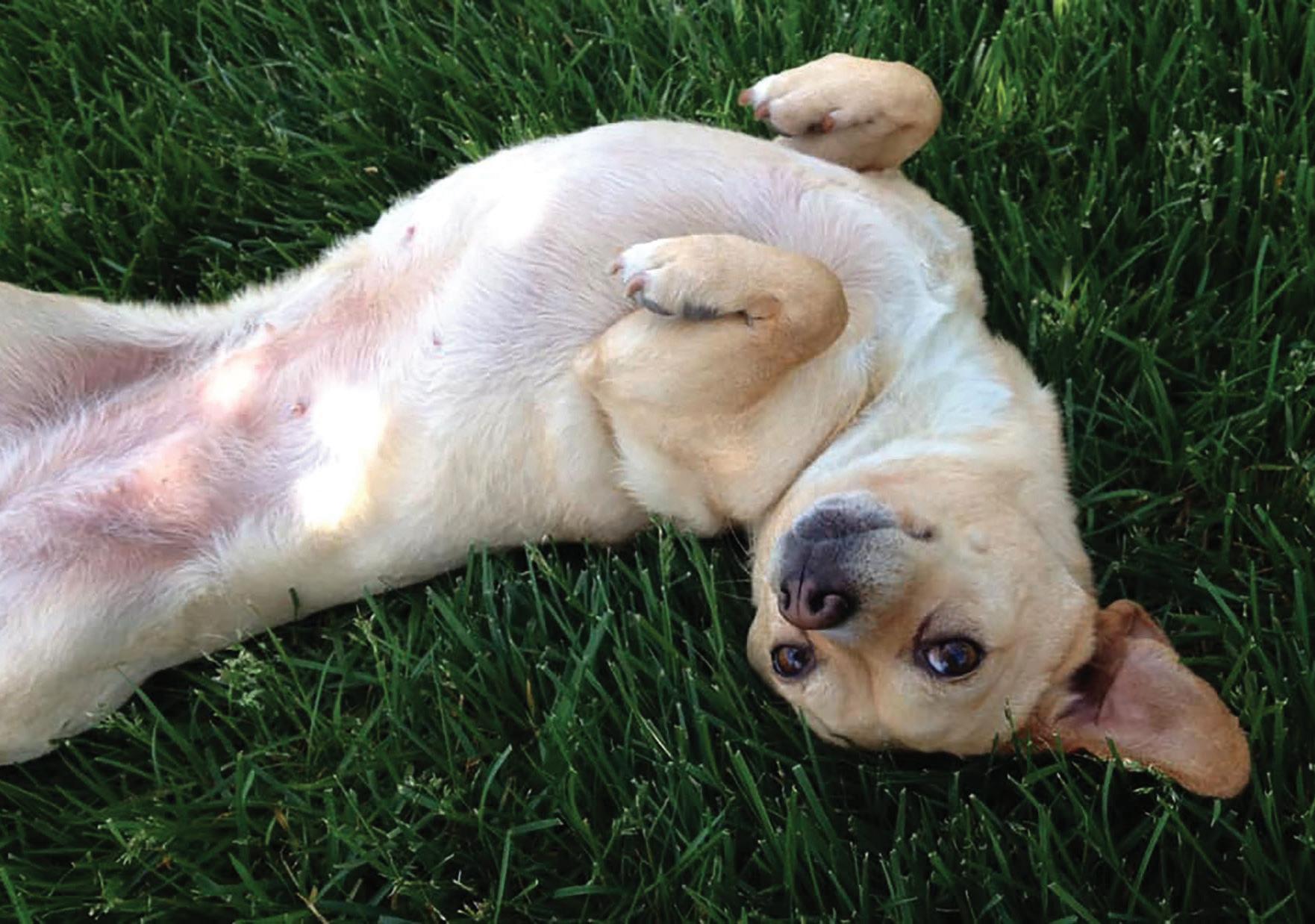 Ygritte - Hartly, DE
Dali, Drake,Ivory & Pretty - Ocean Pines, MD
Dixie - Milton, DE
Ygritte - Hartly, DE
Dali, Drake,Ivory & Pretty - Ocean Pines, MD
Dixie - Milton, DE
To the Rescue
American Black &Tan Coonhound Rescue coonhoundrescue.com
Baywater Animal Rescue Baywateranimalrescue.org
410-228-3090
Brandywine Valley SPCA Georgetown bvspca.org
302-856-6361
Caroline County Humane Society carolinehumane.org
410-820-1600
Chesapeake Cats & Dogs chesapeakecatsanddogs.org
CVC New Beginnings Vizsla Rescue cvcweb.org/rescue
DASH (Dachshund & Small Hound Rescue) DashRescue.net
Delaware Humane Association delawarehumane.org
Wilmington 302-571-0111
Rehoboth Beach 302-200-7159
Dogs Deserve Better-Eastern Shore dogsdeservebetteresva.org/
Dogs Deserve Better- Blue Ridge dogsdeservebetterblueridge.org/
Dogs Deserve Better- Smithfield dogsdeservebetter.org
Golden Retriever Rescue of Southern Maryland goldenretrieverrescueofsouthernmaryland.org
855-477-3728
GRREAT (Golden Retriever)
GRREAT.org
Harnessed to Hope Northern Breed Rescue nbrescue.com
866-657-3728
Hill Hounds Animal Rescue hillhounds.org
410-714-3677
Homeward Bound Schnauzer Res. Hbschnauzerrescue.com
Kindness Matters Rescue shoshino@aol.com
K-9 Rescue of the Eastern Shore K9RescueES.org
Labs4Rescue Labs4Rescue.com
Lu’s Labs Labrador Retriever Rescue luslabs.org
703-888-2612
MaPaw Siberian Husky Rescue sibes.com
610-369-0055
Mid Atlantic German Shepherd Rescue magsr.org
410-644-7763
50 Delmarva Unleashed Fall 2019
Mid-Atlantic Great Dane Rescue League magdrl.org
Mid Atlantic IG Rescue midatlanticiggyresuce.com
Mid Atlantic Jack Rescue majr.org
908-963-3465
One More Dog onedogmore.org
302-632-6680
Operation Paws for Homes ophrescue.org
Playa Animal Rescue (Mexico) playanimalrescue.org
Renee’s Rescues reneesrescues.org
Sgt. Peppers Friends (Aruba) sgtpeppersfriends.com
Somerset County Dog Control

410-651-0986
Sussex County Animal/Whimsical Animal Rescue DelawareRescue.com
Talbot Humane talbothumane.org
410-822-0107One
The Sato Project (Puerto Rico) thesatoproject.org
Wags & Wishes wagsandwishes.org
410-476-8629
Wicomico Humane wicomicohumane.org
410-749-7603
Worcester Cty Animal Control
410-632-1340
Worcester Humane worcestercountyhumanesociety.com
410-213-0146
Worcester County 410-632-1340 has great adoptable dogs ...and offers low cost spay/neuter! Dogs $100 Cats $50 Microchips $25 Open Saturdays too! Animal Control
Social Media Fun!



















As we move into our 6th year of Delmarva Unleashed, we have more fun in store for our readers! And because we only see you once a year at the annual Pooch Palooza Dog Festival, we have taken the fun to our Social Media pages. Be sure to like us on Facebook and Follow us on Instagram this year. You or your dog could win prizes and maybe even a place in the Delmarva Unleashed Doggie Socials. Post to our page we love to see your dogs out and about! Check-in often as we have at least one contest a month scheduled and you don't want to miss the Delmarva Unleashed 12 Days of Christmas Giveaway!























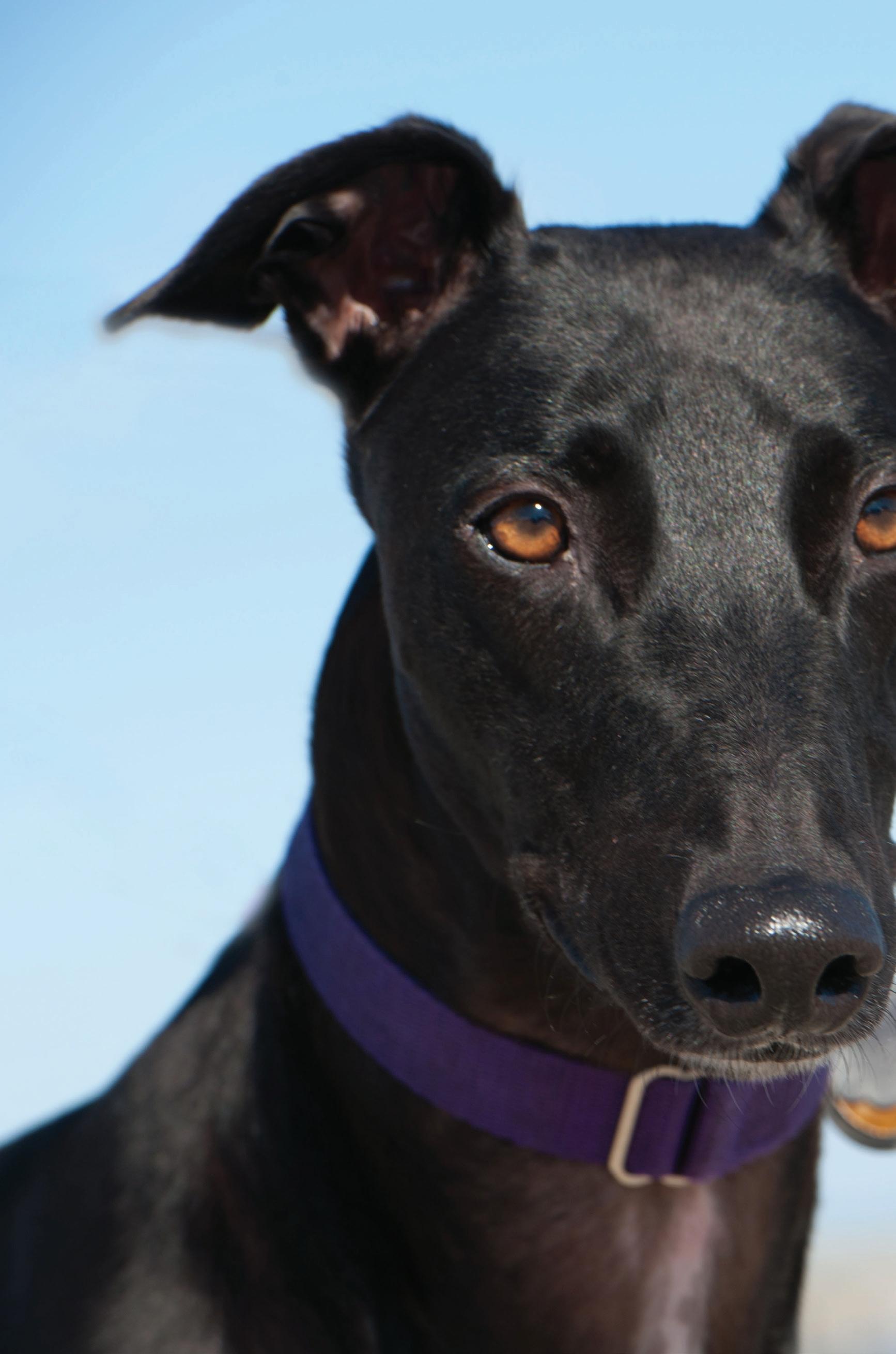
Summer lovein’ had me a blast...

Canine Perspective







































































 by Linda Riggins
by Linda Riggins


































































































 by Amanda Abresch, B.S., ABCDT, APDT, CPDT-KA
by Amanda Abresch, B.S., ABCDT, APDT, CPDT-KA
























 by Tracy Rosensteel
by Tracy Rosensteel















 Photographed at Pooch Palooza
Photographed at Pooch Palooza
 T. Verdent
T. Verdent



























 Oatmeal
Oatmeal




















 by John Maniatty, V.M.D.
by John Maniatty, V.M.D.






 Amanda Abresch
Amanda Abresch


















































 by Adiris (Didi) M. Cordero-Torres de Figueroa
by Adiris (Didi) M. Cordero-Torres de Figueroa















 Reader Submitted Photos
RogieNewark, DE
Dino - Harrington, DE
Annie, Greensboro, MD
Raven - Allen, MD
Reader Submitted Photos
RogieNewark, DE
Dino - Harrington, DE
Annie, Greensboro, MD
Raven - Allen, MD


 Ygritte - Hartly, DE
Dali, Drake,Ivory & Pretty - Ocean Pines, MD
Dixie - Milton, DE
Ygritte - Hartly, DE
Dali, Drake,Ivory & Pretty - Ocean Pines, MD
Dixie - Milton, DE













































